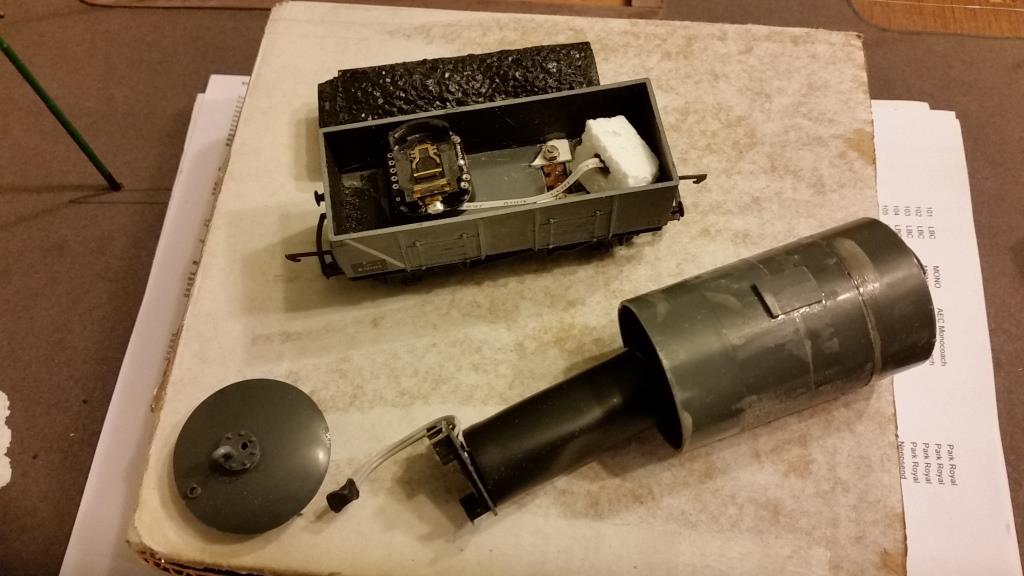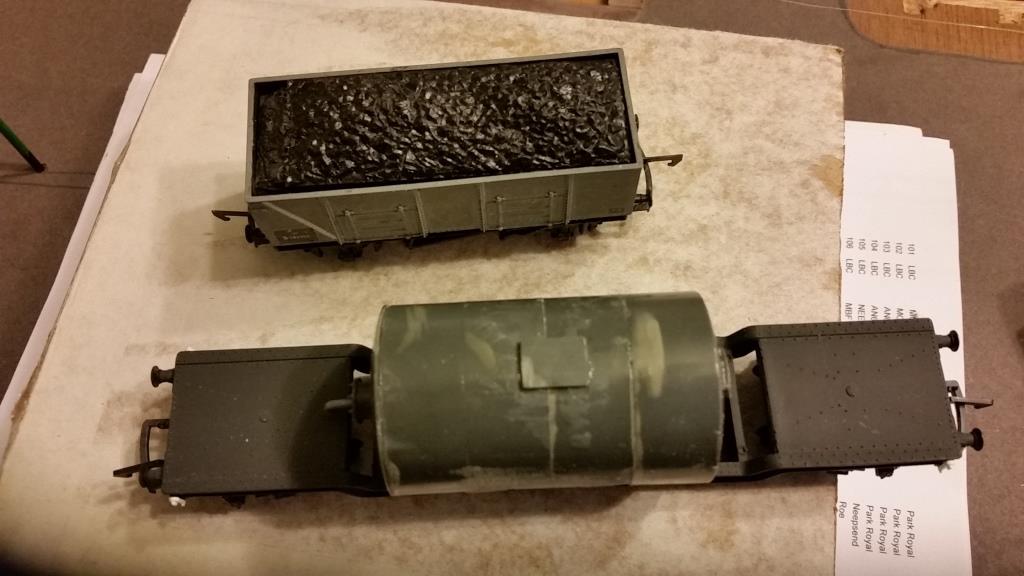The 4F's.
Although the same prototype, these models are entirely different.
One is an Airfix, with tender drive, renumbered 44467 and dirtied up, the other is a
white-metal kit with re-wheeled chassis and motor in the loco. This has been numbered
44056 as this was shedded at Mirfeld.
I look forward to comparing the two in intensive operation!
(>>)
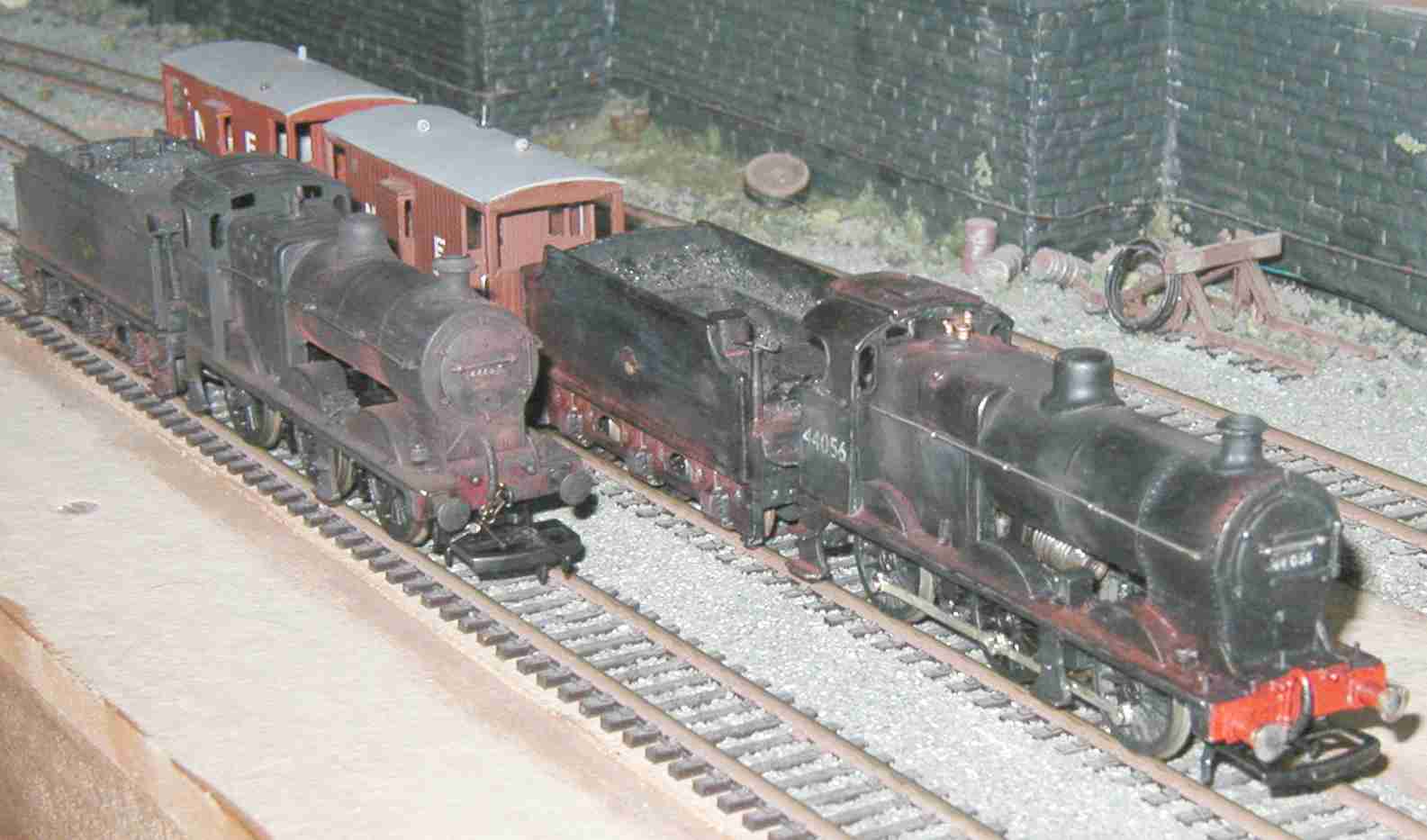
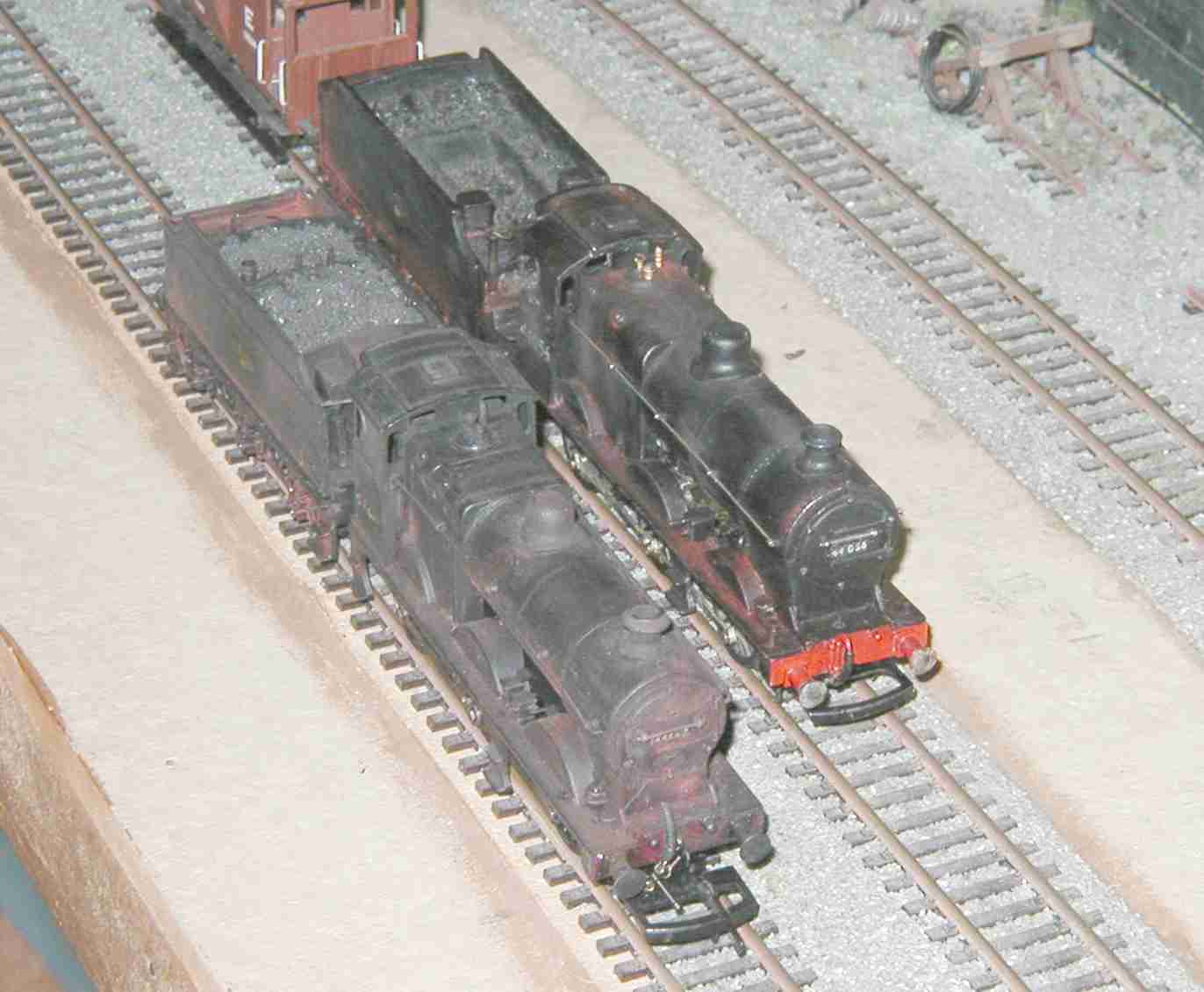
Ivatt Class 2
"Mickey".
This started life as a green Hornby version! Now numbered
46498 of Holbeck, this loco did some work on the Penistone line from Huddersfield when Low
Moor or Huddersfield were short of engines.
Dirtied to a lesser extent, as these locos tended to be used on lighter duties.
(>>)
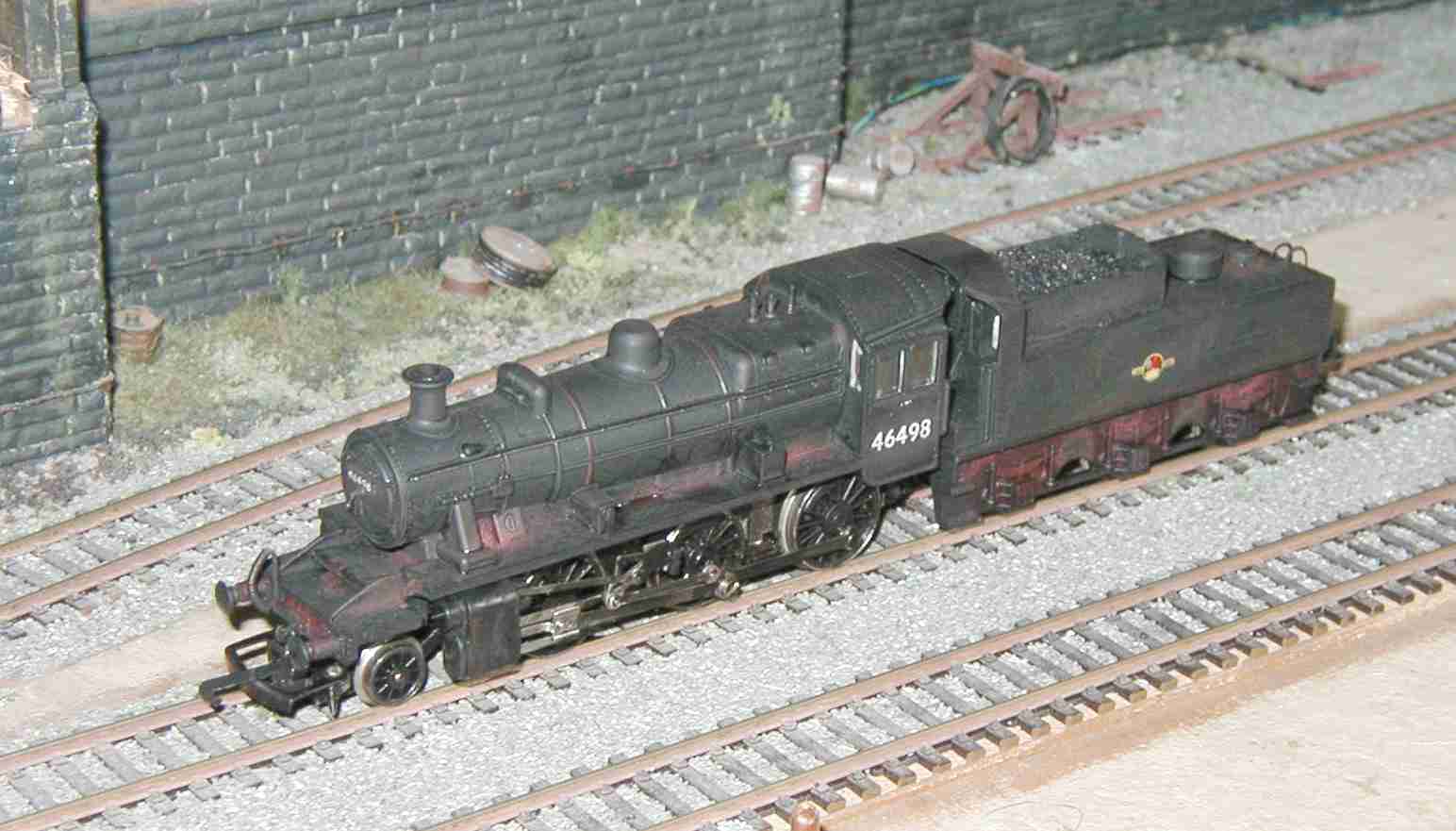
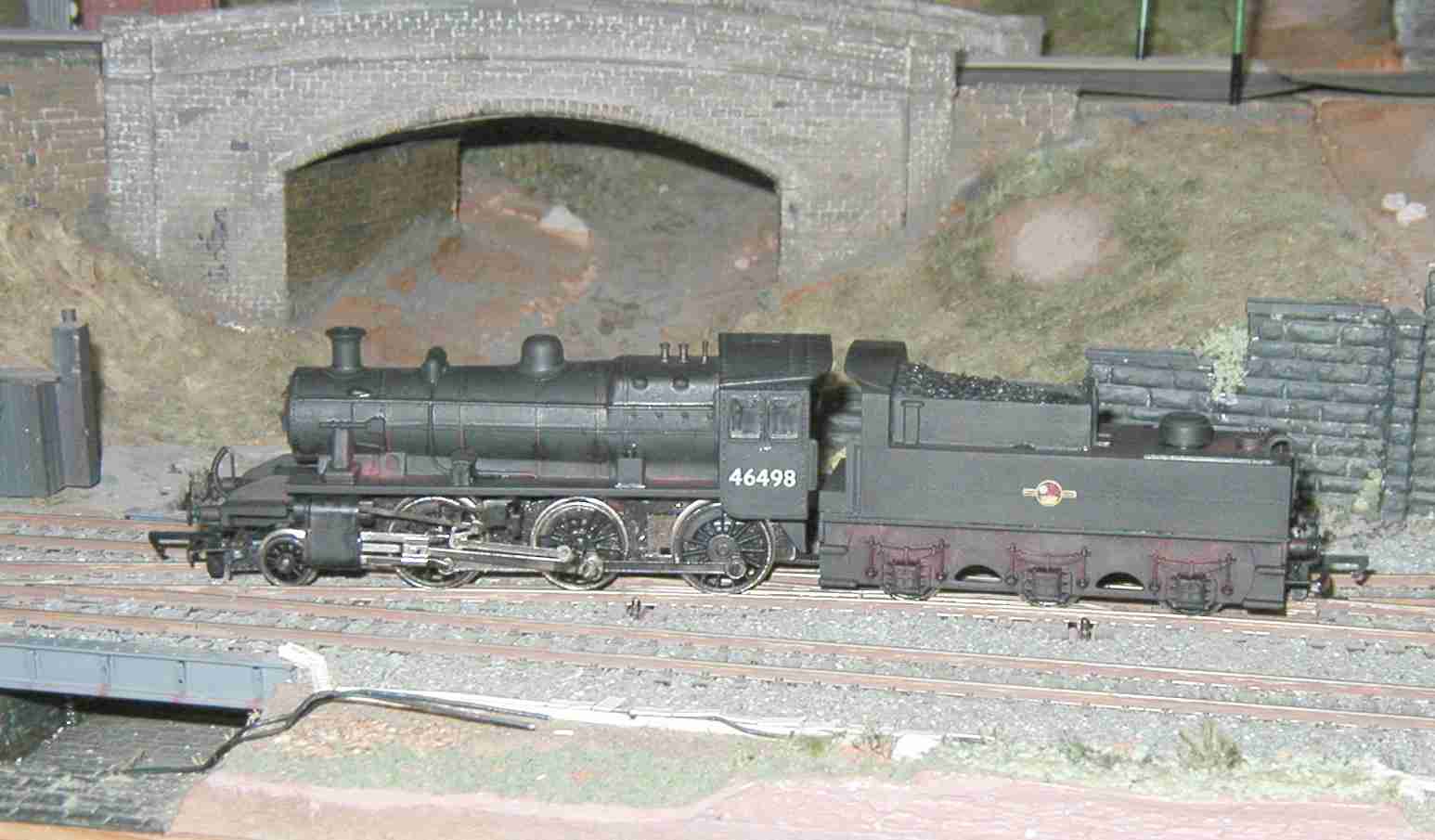
Hughes 'Crab'
2-6-0.
42721 certainly operated over the Standedge line hauling the
Leeds-Manchester trains. It was based in Lancashire in the 1950's and 60's. It is seen
here running out of the bay platform and also leaving the tunnel. This is another
white-metal bodied loco, with a modified and re-wheeled Hornby 2-6-2 chassis. The
valvegear is etched brass, and everything moves. Boy, did that take some constructing and
setting up! (See below).
A later addition has been a weathered Bachmann Crab. Again, it will be interesting to see them in operation together. (>>)
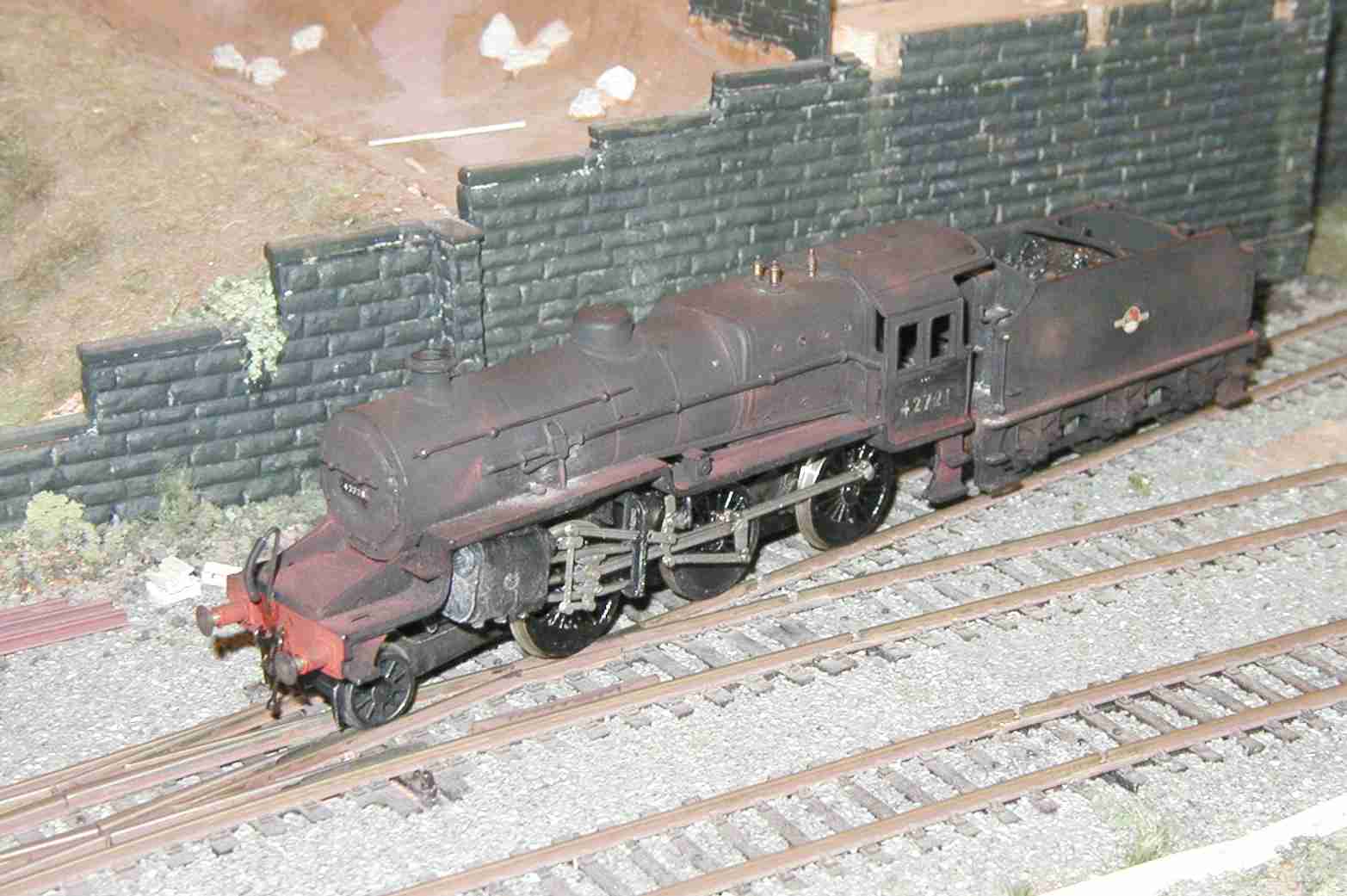
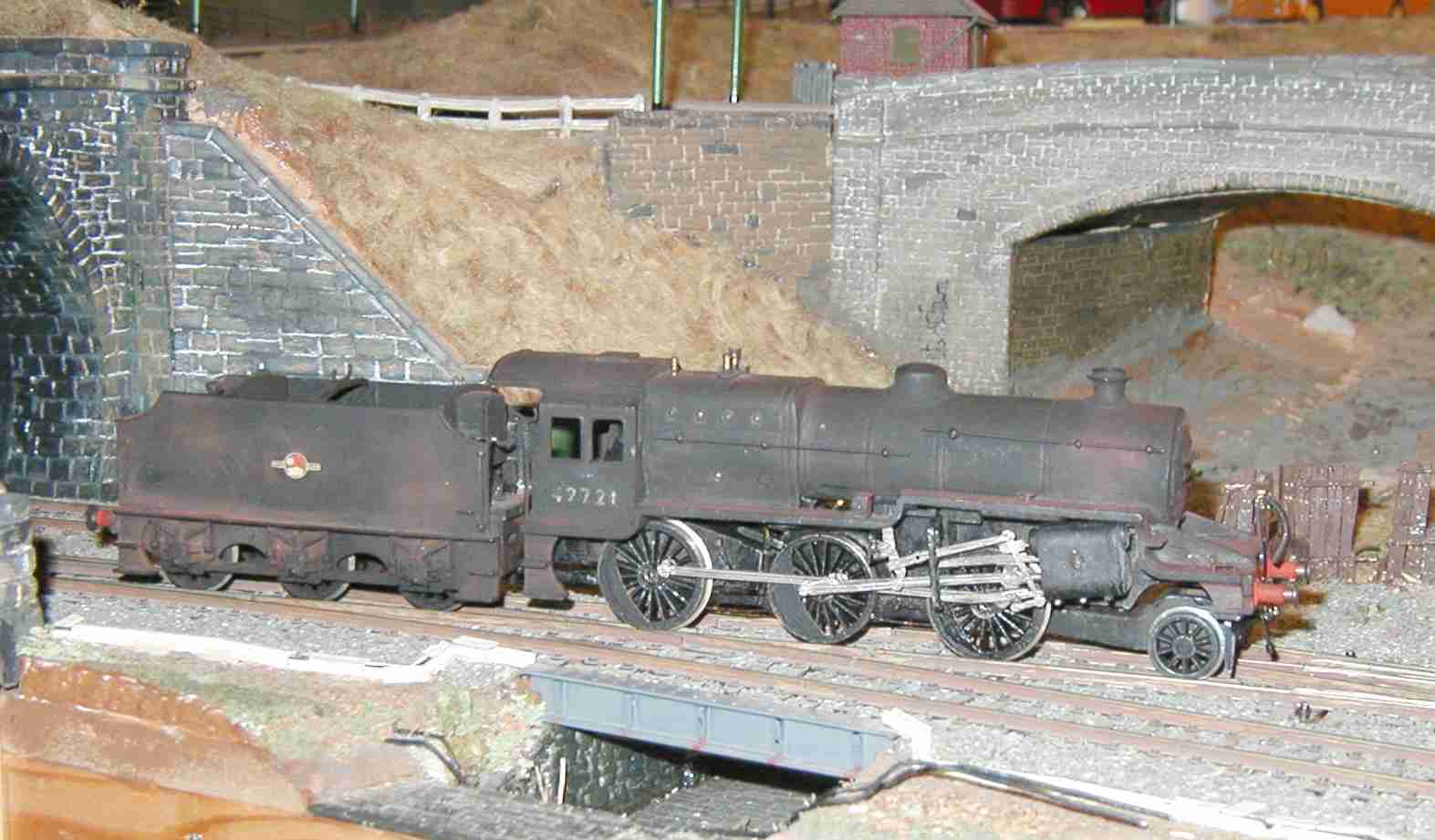
(Left) The Crab chassis
wheeled with the main coupling rods in place and the cylinder etching fitted. The piston
rods, slide bars, cranks and cylinder sides can be seen.
(Right) The completed article after many, many hours of assembly and re-assembly to
get it to work. Even the upper valve rod operates, so it is quite satisfying to see
running!
(>>)
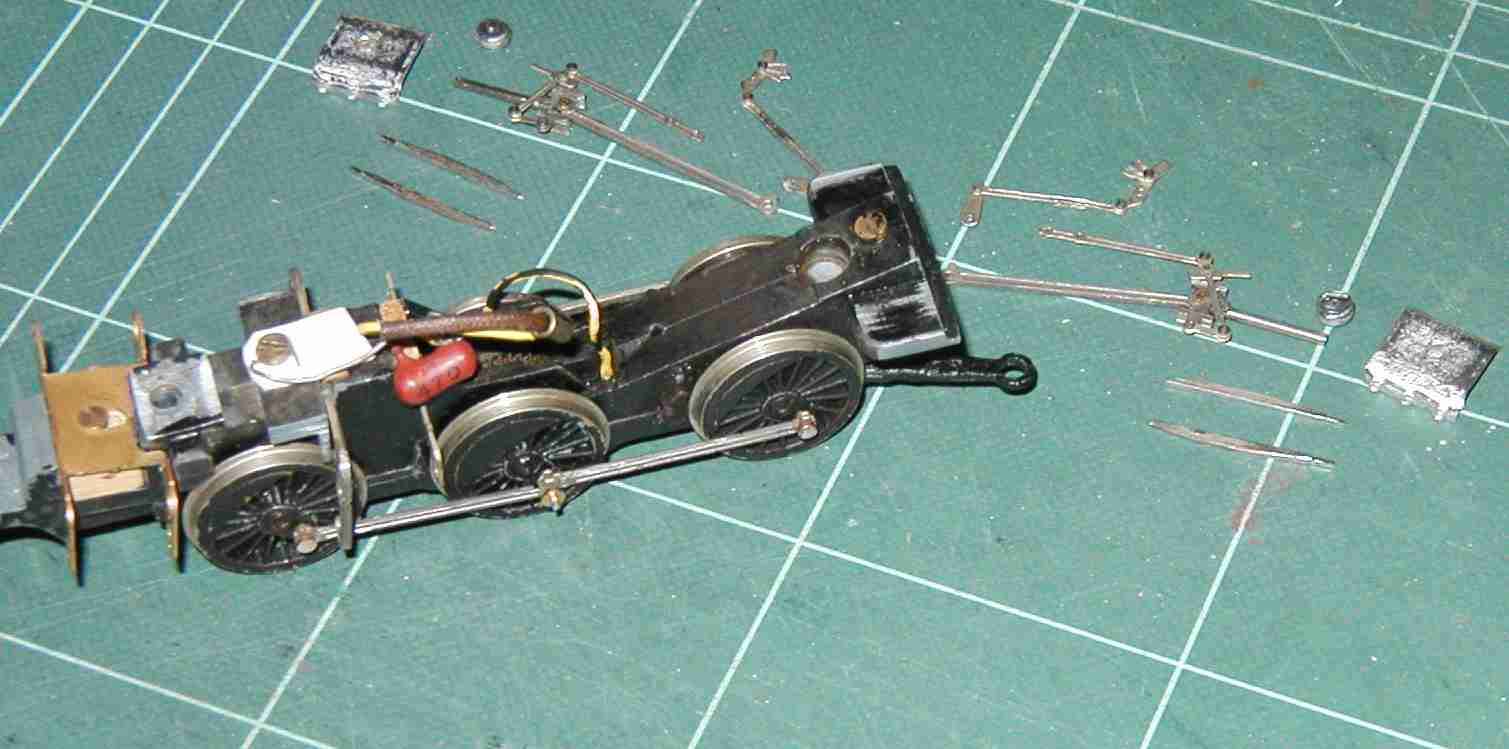
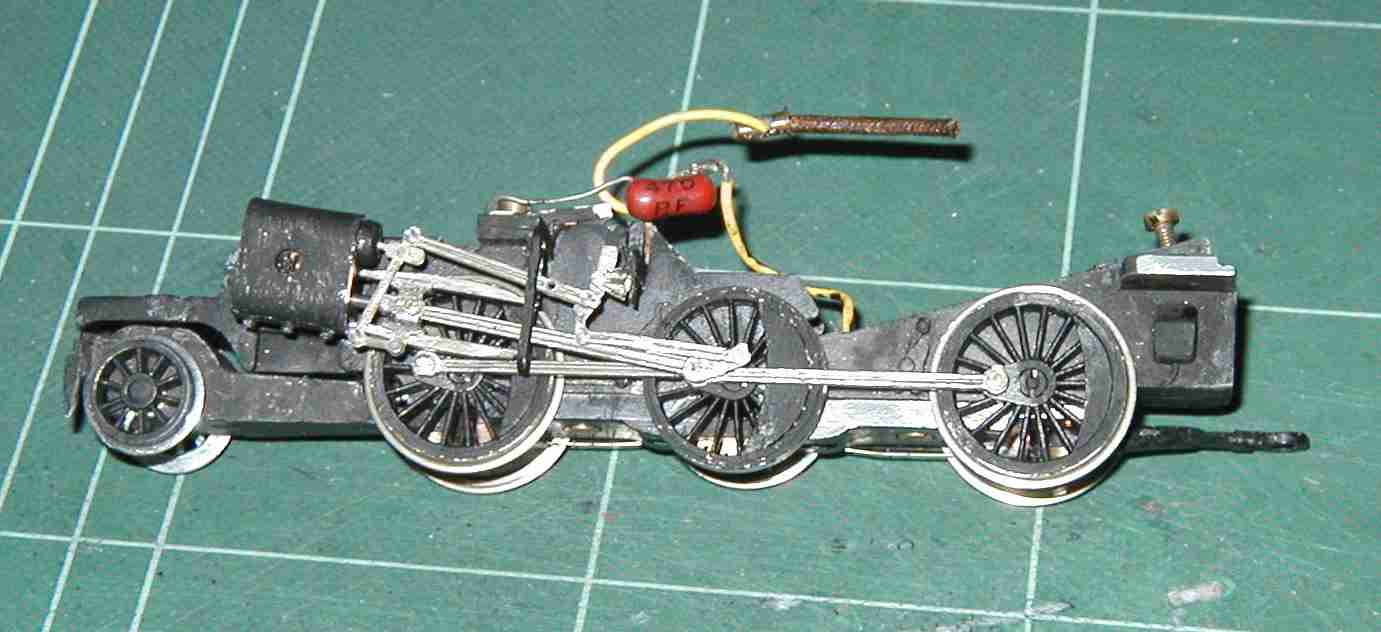
This Bachmann example is a useful addition to the fleet as these were used on various duties, and I can use it to haul my planned coal trains around.
Numbered 75006, it arrived already weathered, but needs some more work done on it yet.
(>>)
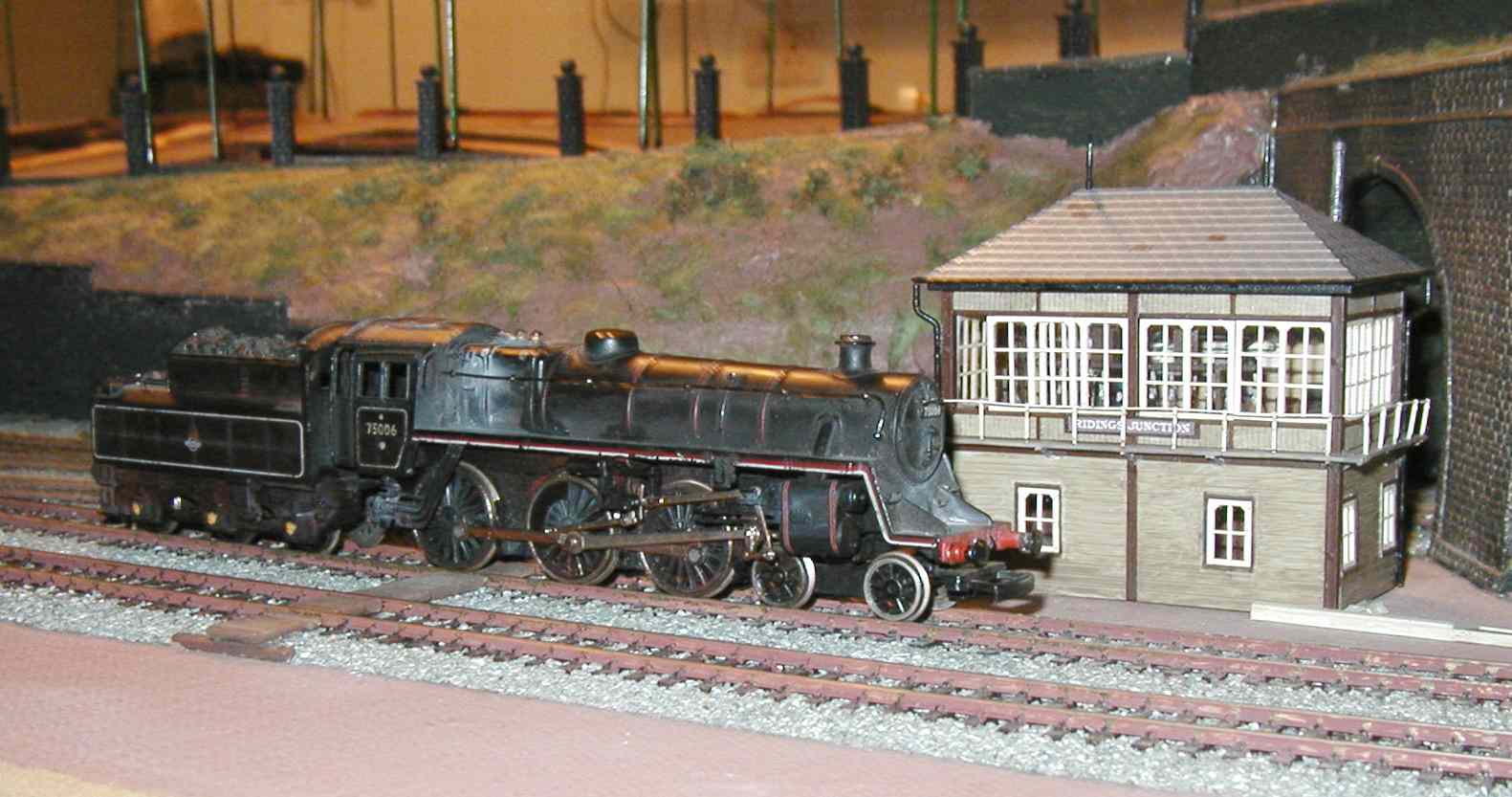
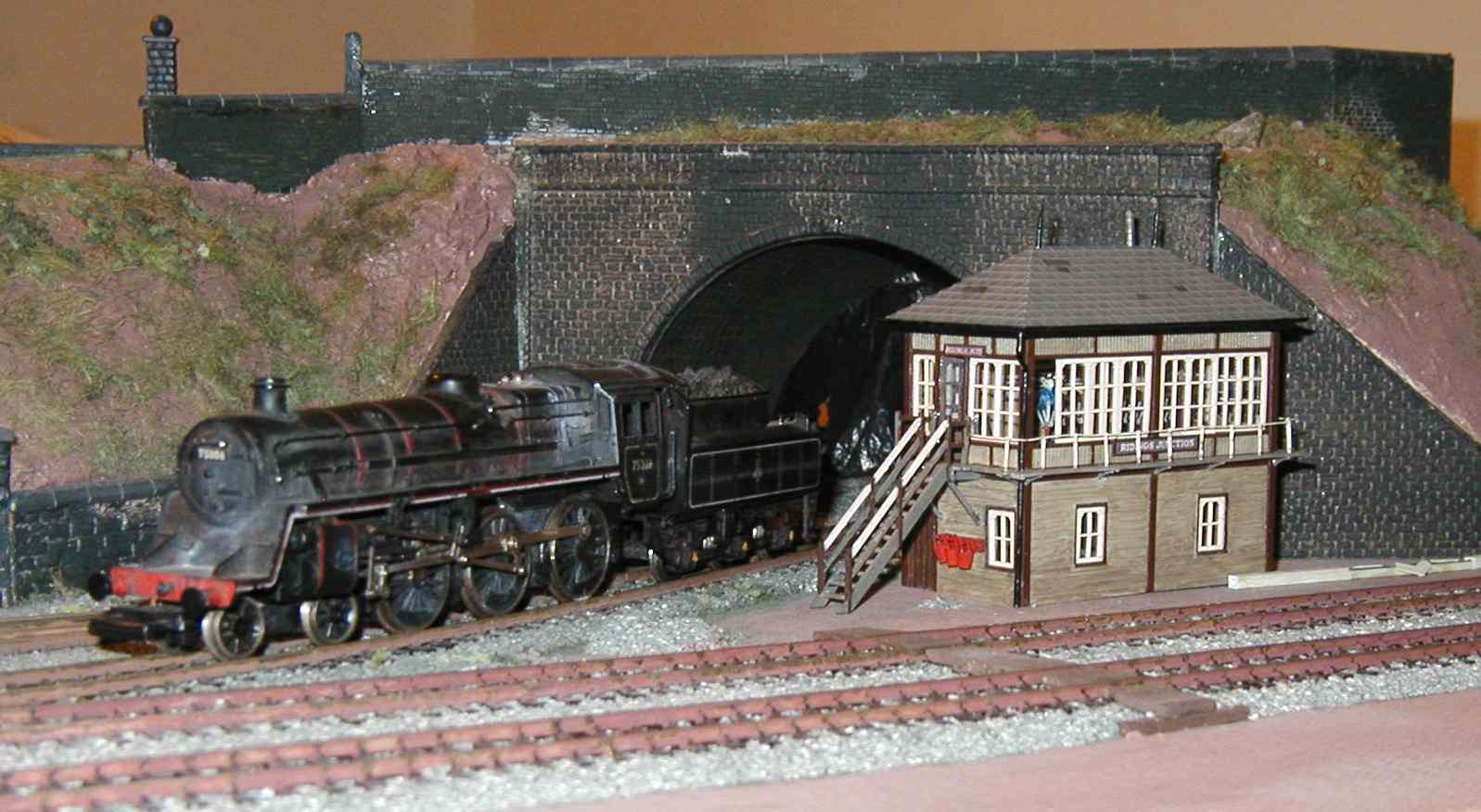
A busy scene with 3 new locomotives on the
roster. These are, in order from bottom to top:
Black Five 44666. This is lightly weathered.
BR Standard 5MT 73162. Not weathered as yet.
Ivatt 4MT 43039. A useful little engine.
(>>)
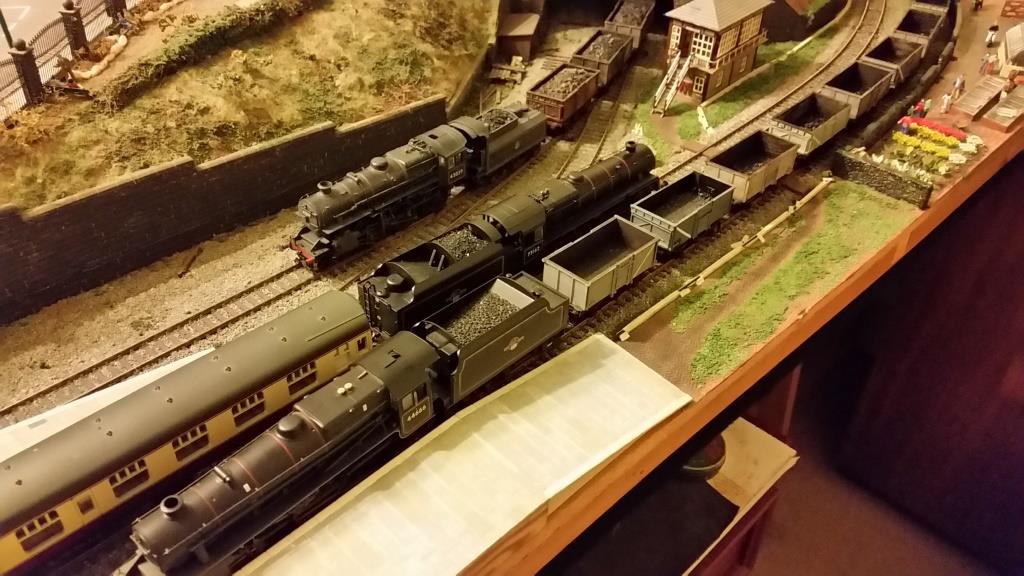
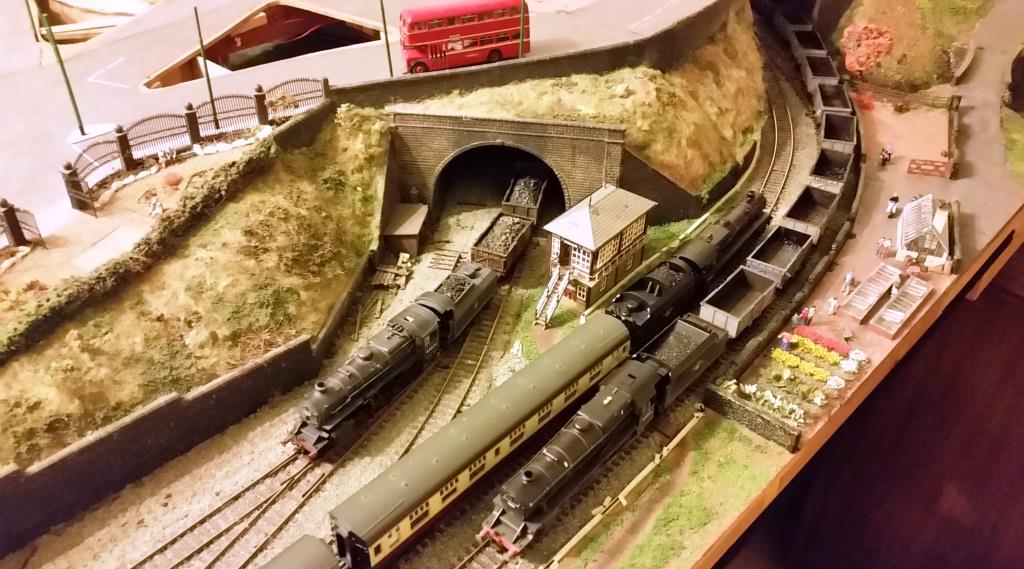
The same location as above, but this time
with another new arrival:
Jubilee 6P 45691. This is not weathered as yet. Nice to have a green
loco amongst all the black ones. Here it is pulling a rake of 'blood and
custard' carriages.
Coming the other way is the Standard 4 hauling a recently
built/weathered/coaled set of 16 ton coal trucks.
(>>)
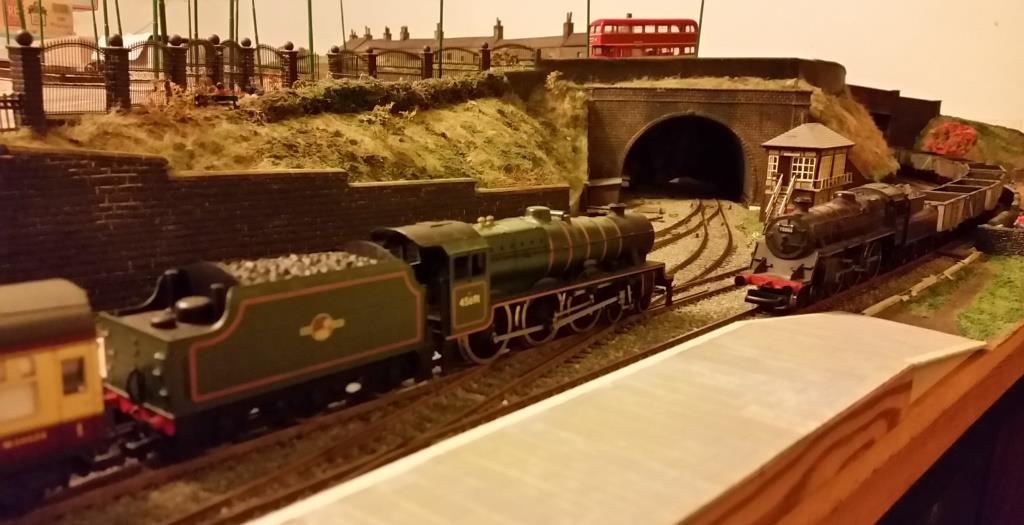
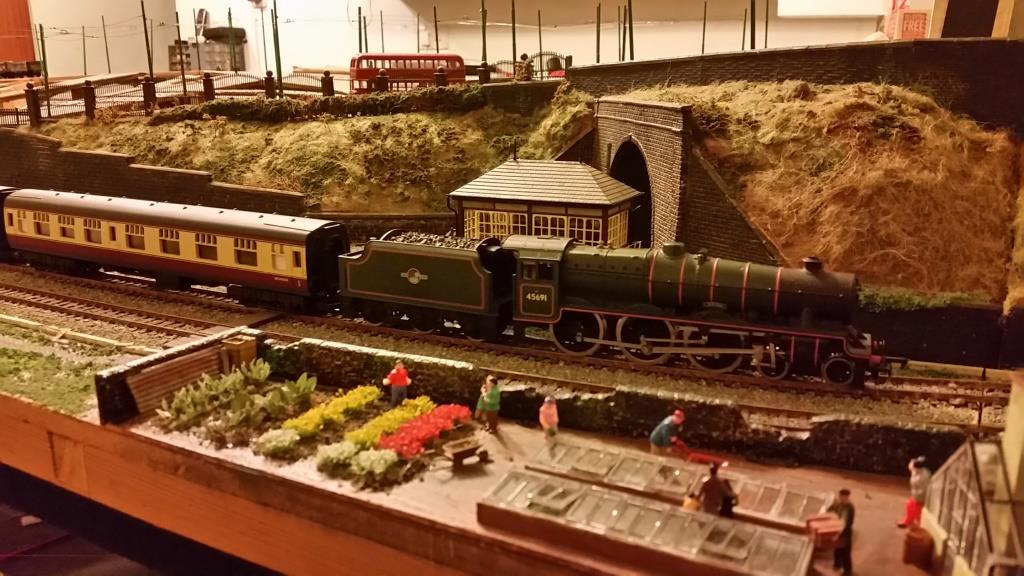
EE Type 4
- class 40 - with split headcodes leaves the bay platform and into the tunnel with a train
of empty coal wagons. This Lima product is D335 and runs very well, having pickups on most
of the many wheels.
(>>)
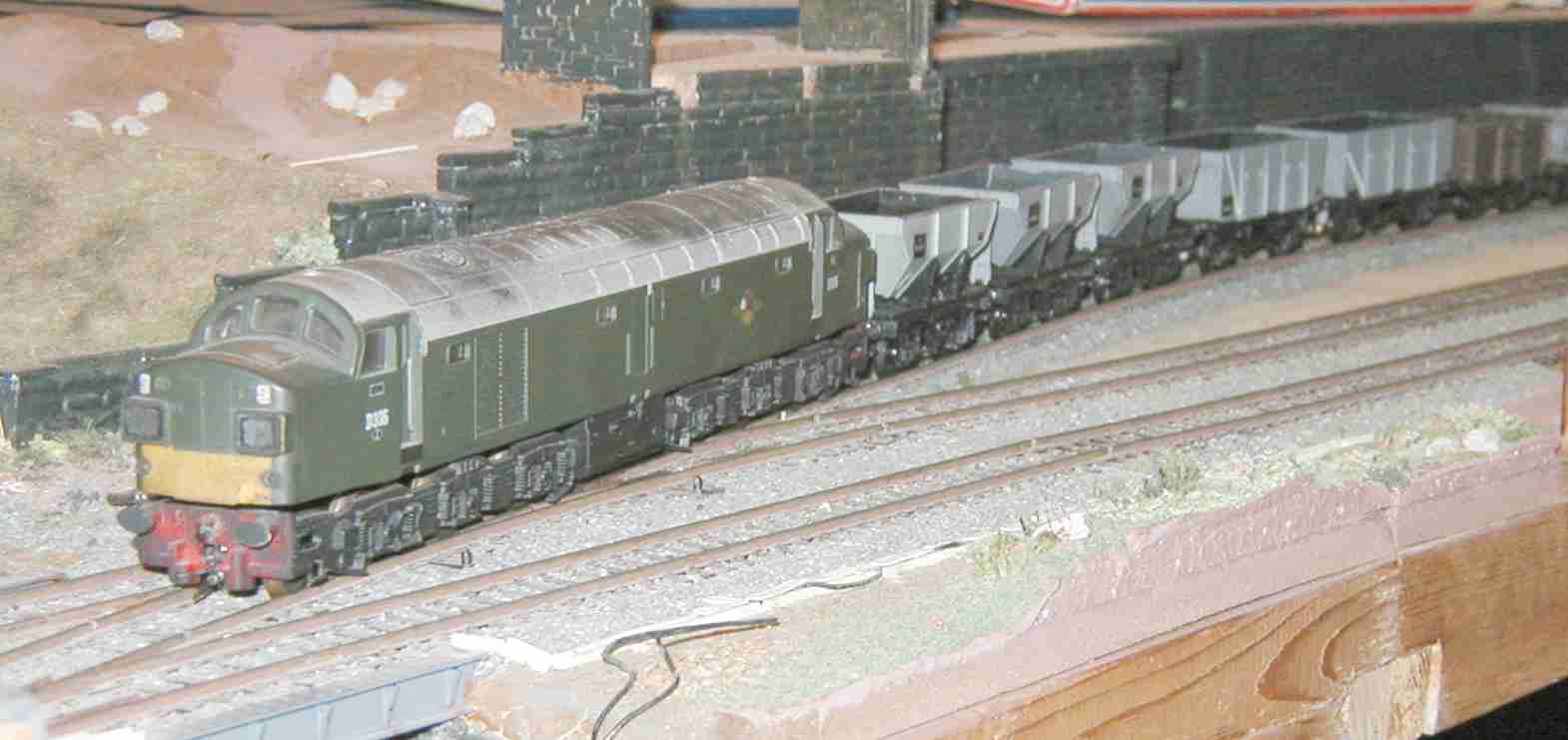

Brush Type 4
- class 31 - D5531 leaves the station with passenger train. A 'blood and custard' coach is
in view.
This is another Airfix model, and is rather lacking in pickup capability,
making it the
worst runner in the fleet.
A Halifax single deck bus looks on from the river bridge.
(>>)
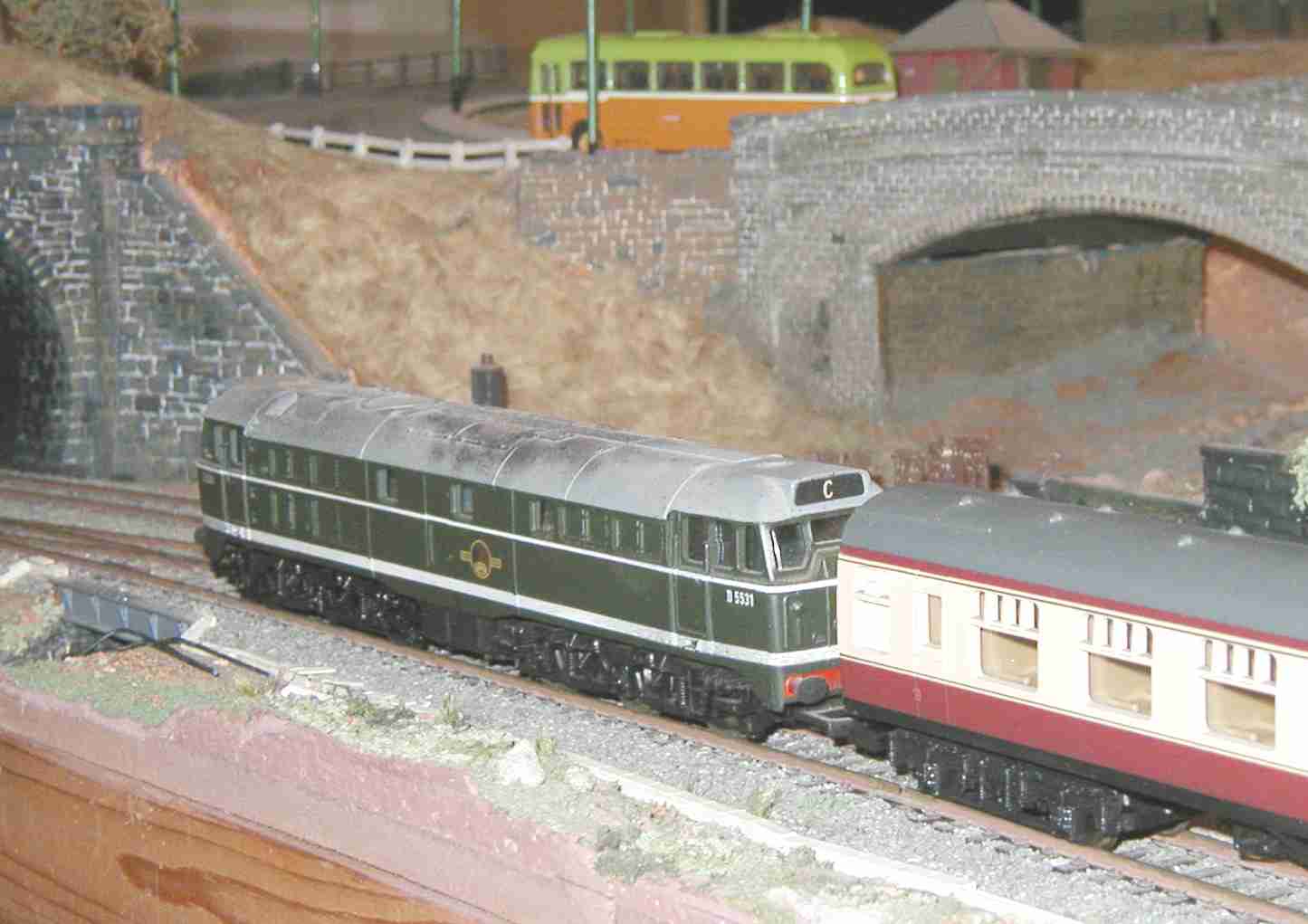
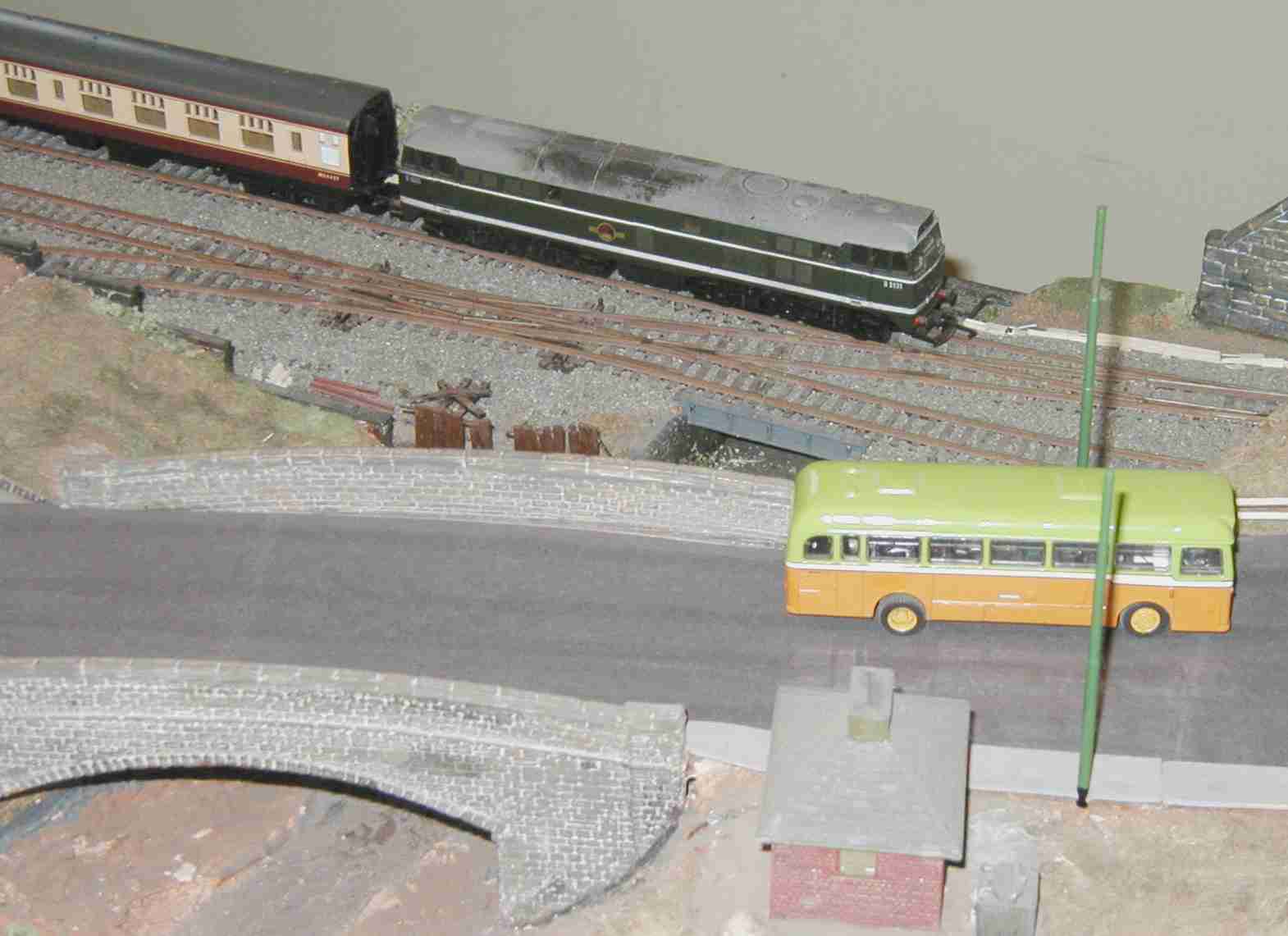
A Prototype Deltic sometimes makes an appearance; here it leaves the tunnel with a train of maroon coaches. Tested on several lines in the UK, I have no evidence that it ever came through Huddersfield but must have been in the Leeds area - it certainly strayed 'up north', being tested on the Settle and Carlisle line and later hauling passenger trains between Doncaster and Kings Cross on the Hull-KX service.
Of course the
prototype was never numbered.
This is a motorised plastic kit with etched brass plates.
(>>)
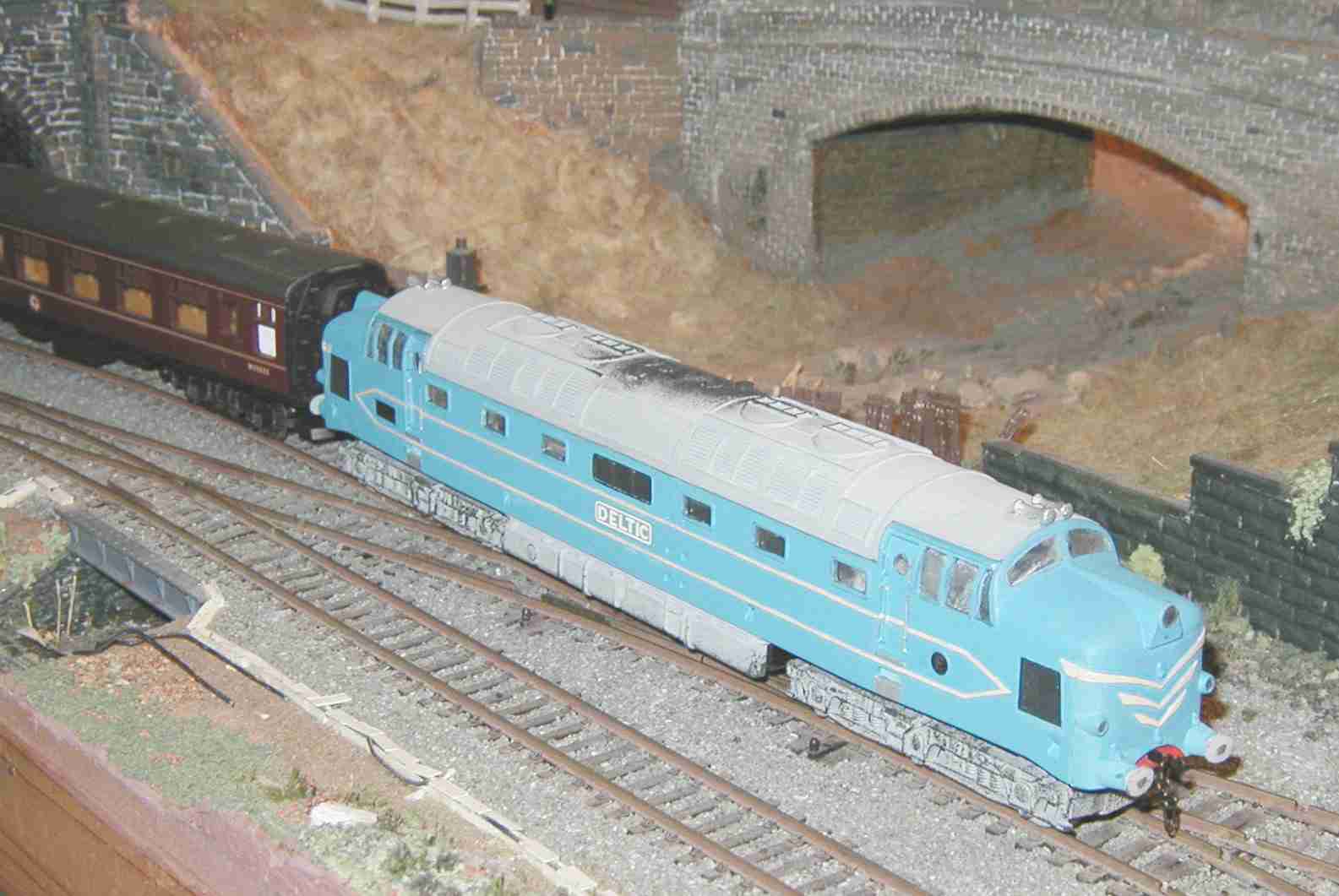
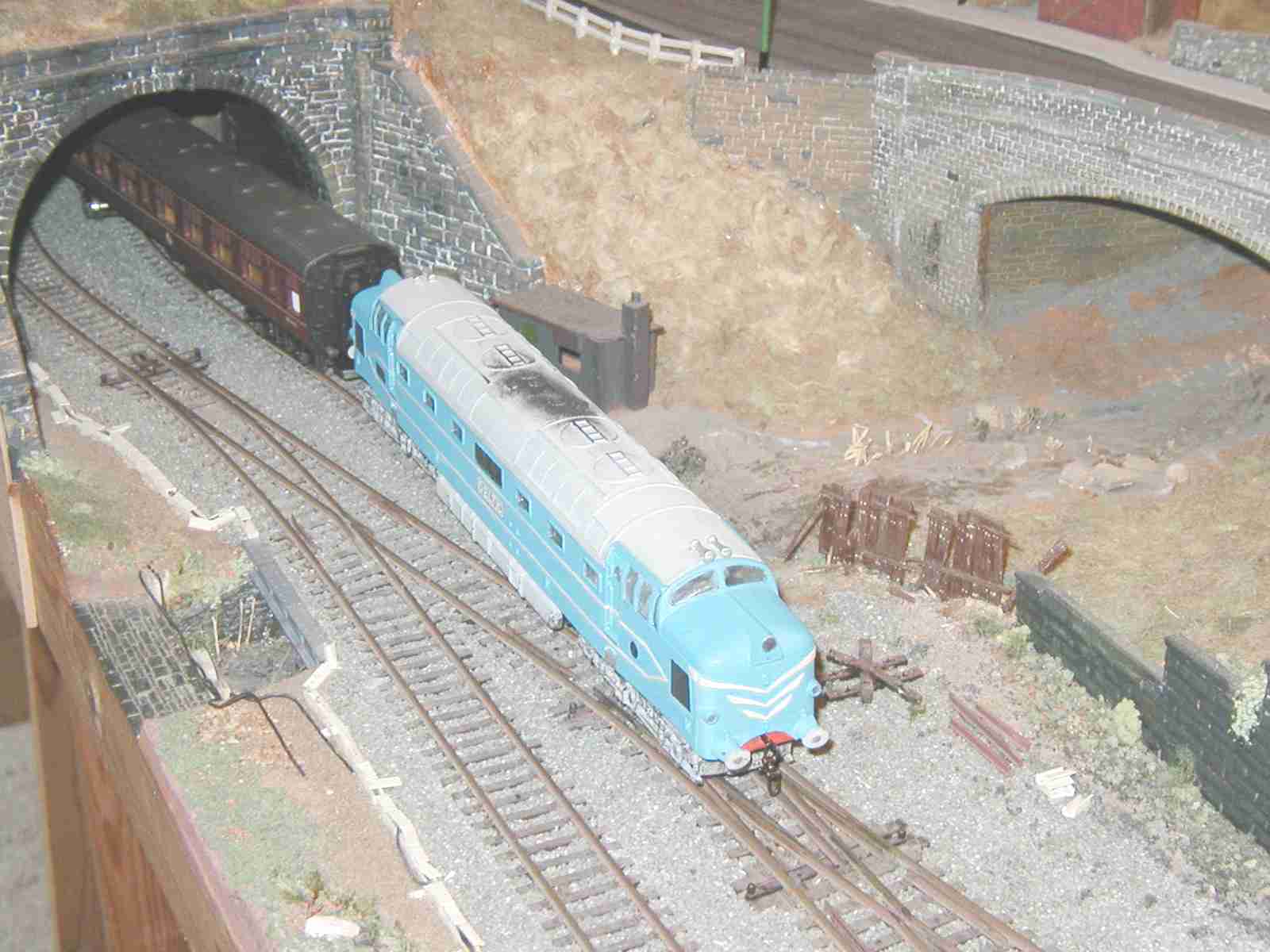
Further diesel motive power has been added
with the following locomotives:
Brush Sulzer Type 4 (class 47) D1500.
English Electric Type 3 (class 37) D6984
(>>)
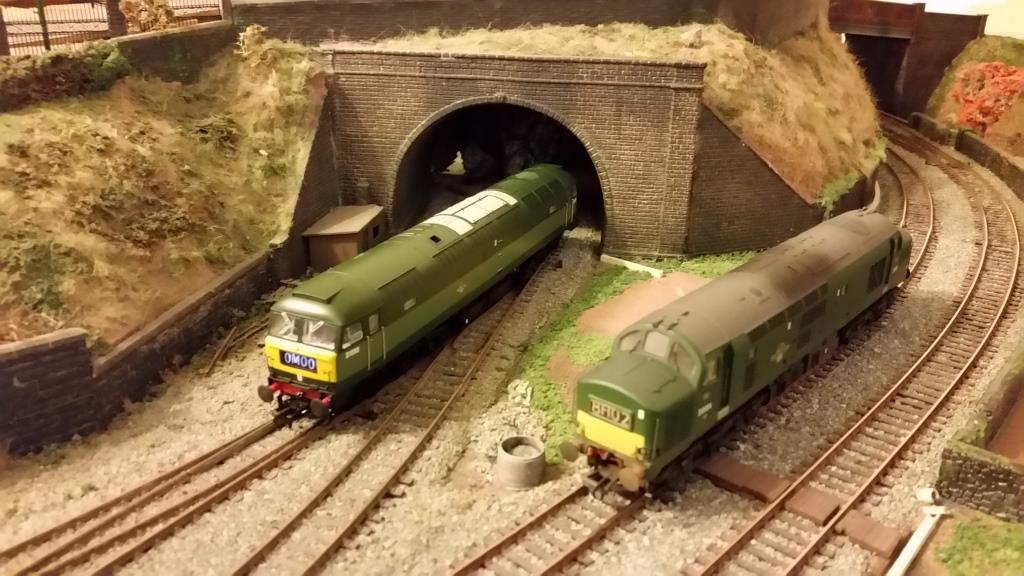
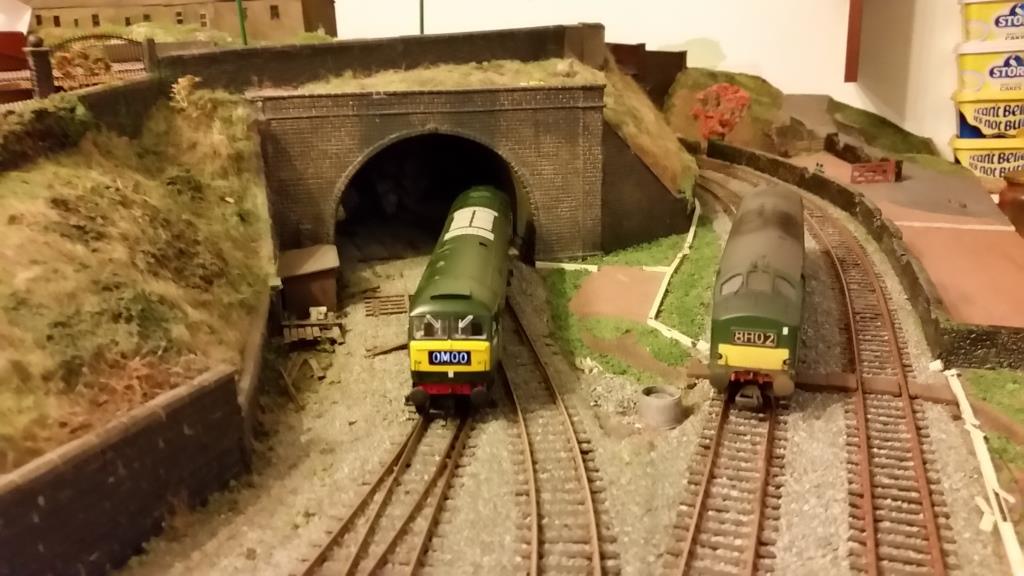
A 5-car
Transpennine Set (class 124) stands in the bay platform before crossing the down line and
heading into the tunnel. These sets were used intensively on the Standedge
route, and started life as 6-car sets with a buffet, but this was later
removed to leave 5-car sets.
This is a Trix set. I have added a number of transfers to make it more complete. I had to
convert the centre cars (two saloons and a brake) from Trix maroon coaches.
The scale is slightly smaller but it makes a fine sight all the same.
The set is weathered now.
(>>)
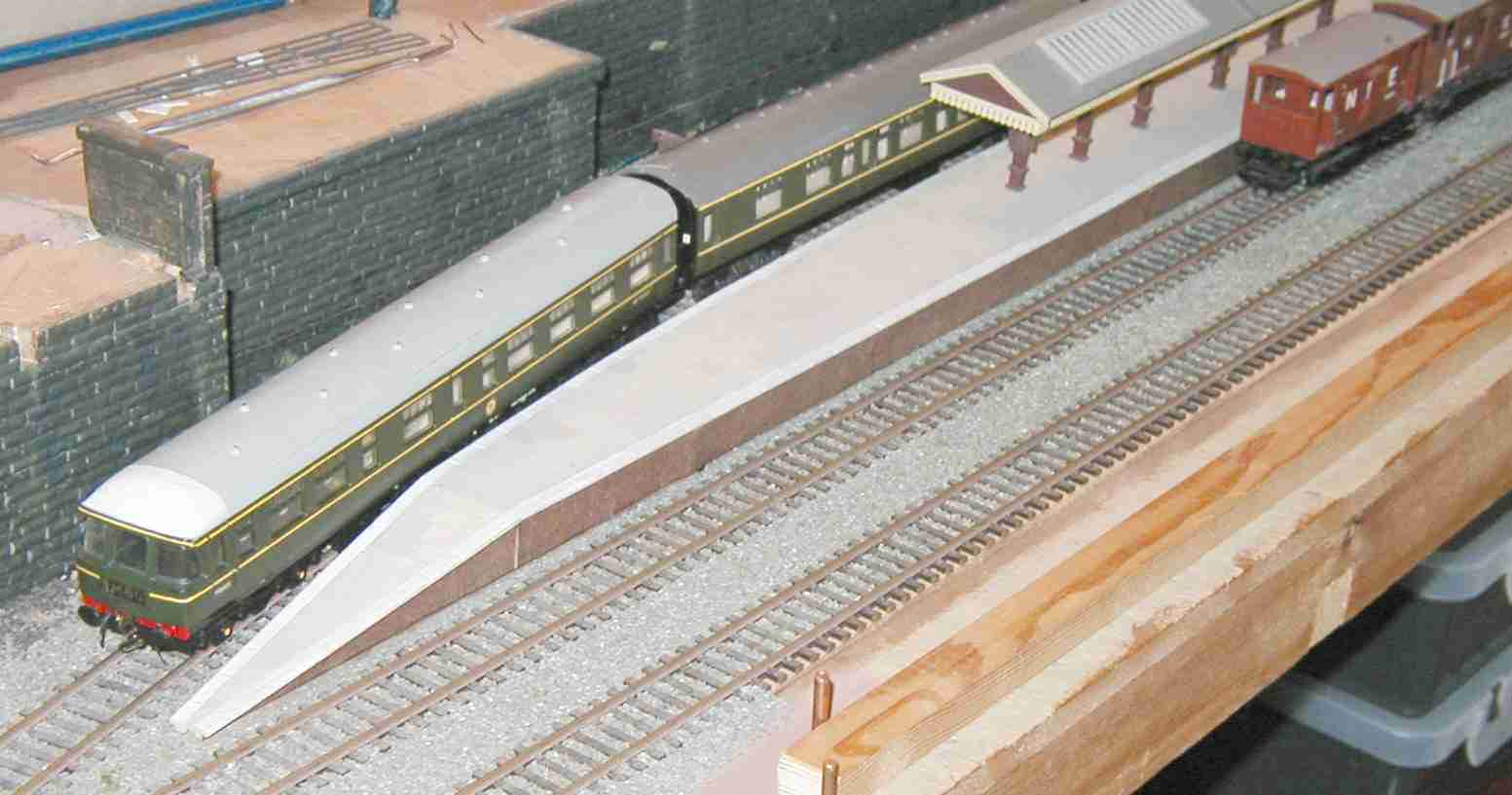

Here the Brake end (second car, on the left here) has been 'engined' on the undercarriage and one of the coaches has been transformed into an open gangway version (on the right here).
(>>)
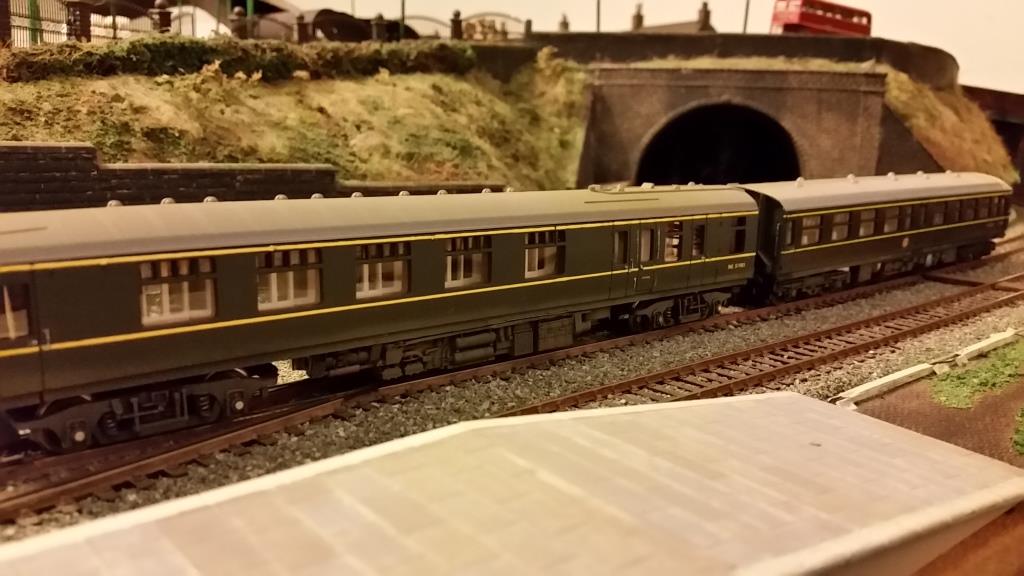
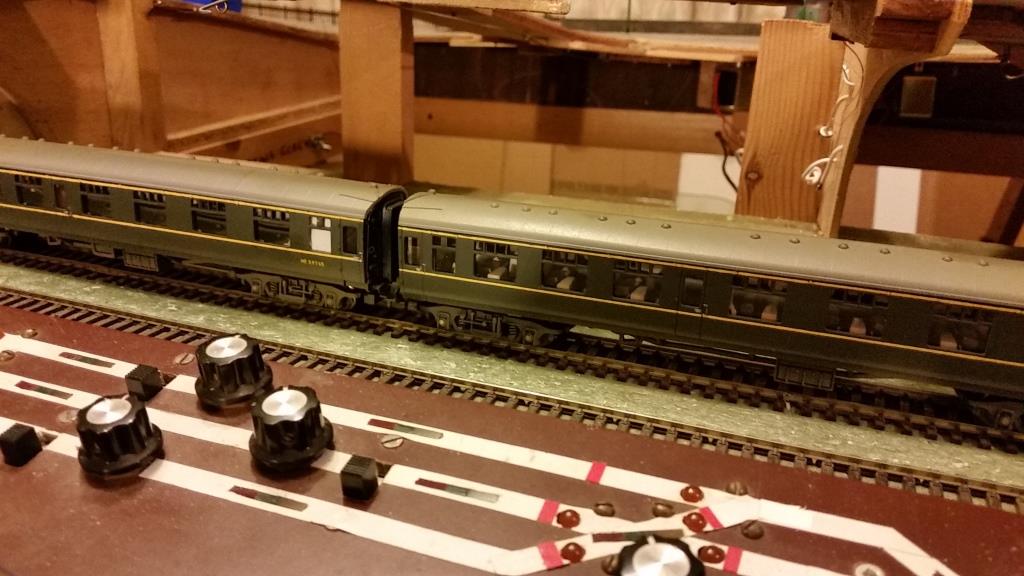
While not strictly prototypical for the Ridings (a 101 would be better), there were many small 2 and 3 car DMU's running all over the area, which this represents.
(>>)
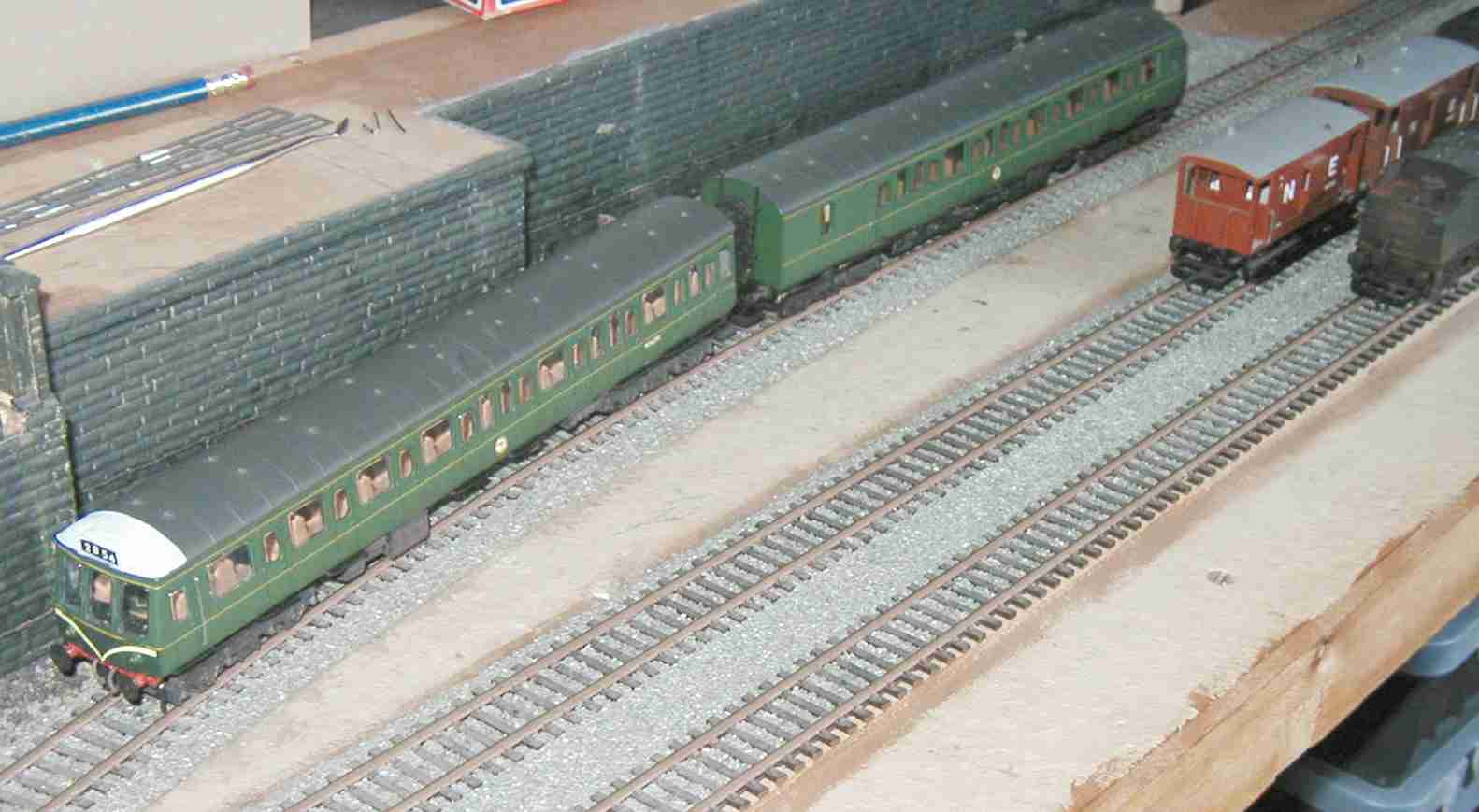
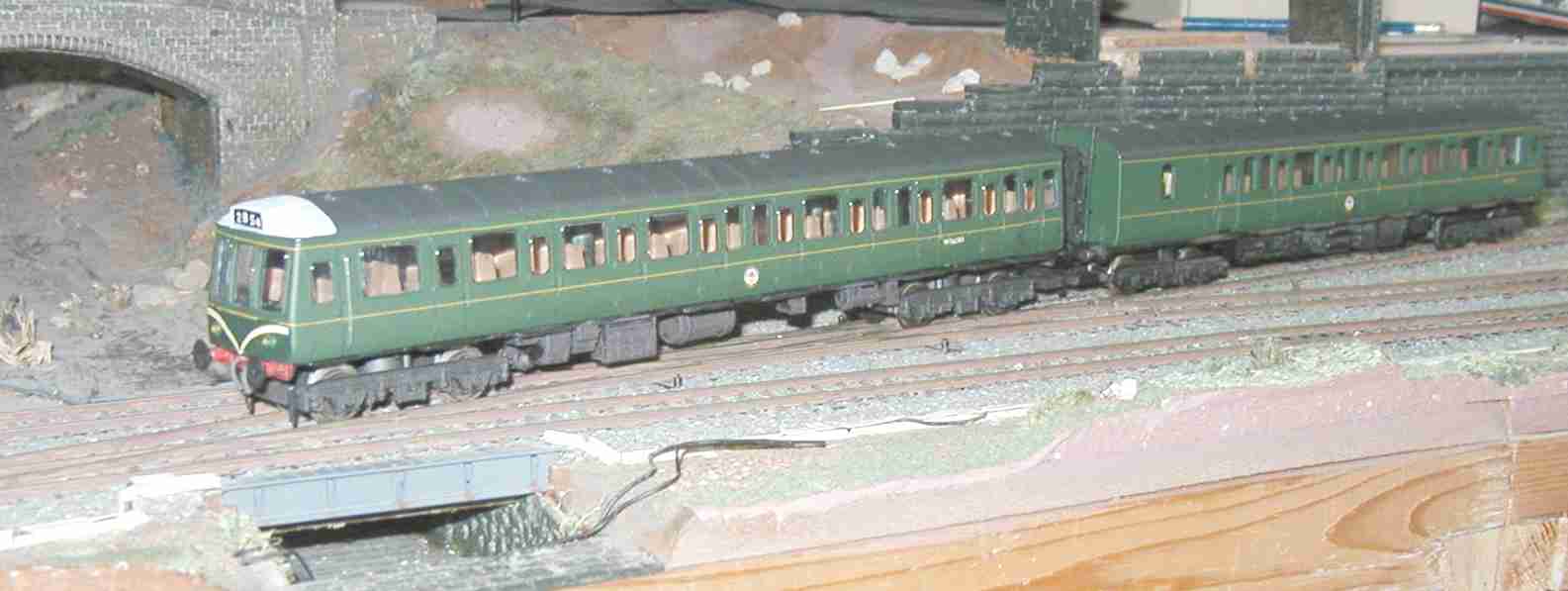
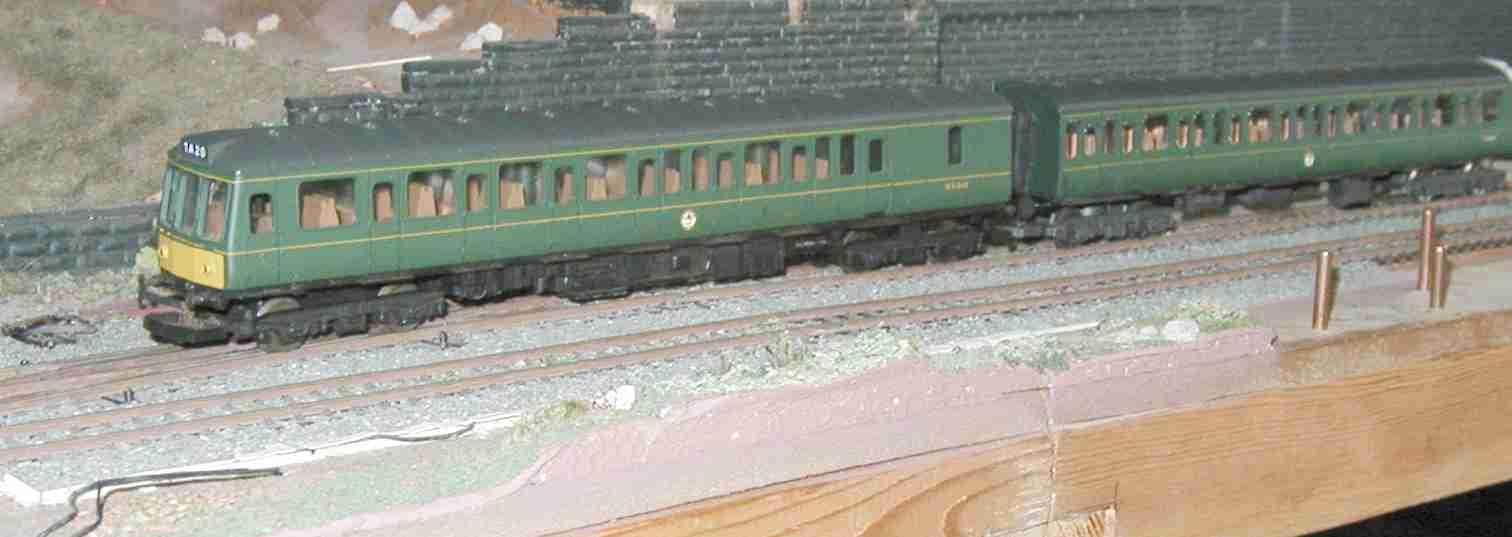
(Left) The TP hurtles through the station on a non-stopping service, while the local hums gently in the bay platform.
(Right) A worms-eye view of the station throat from the tunnel.
Note that the bridge is temporarily removed in all these shots for more scenic
work to take place.
(>>)
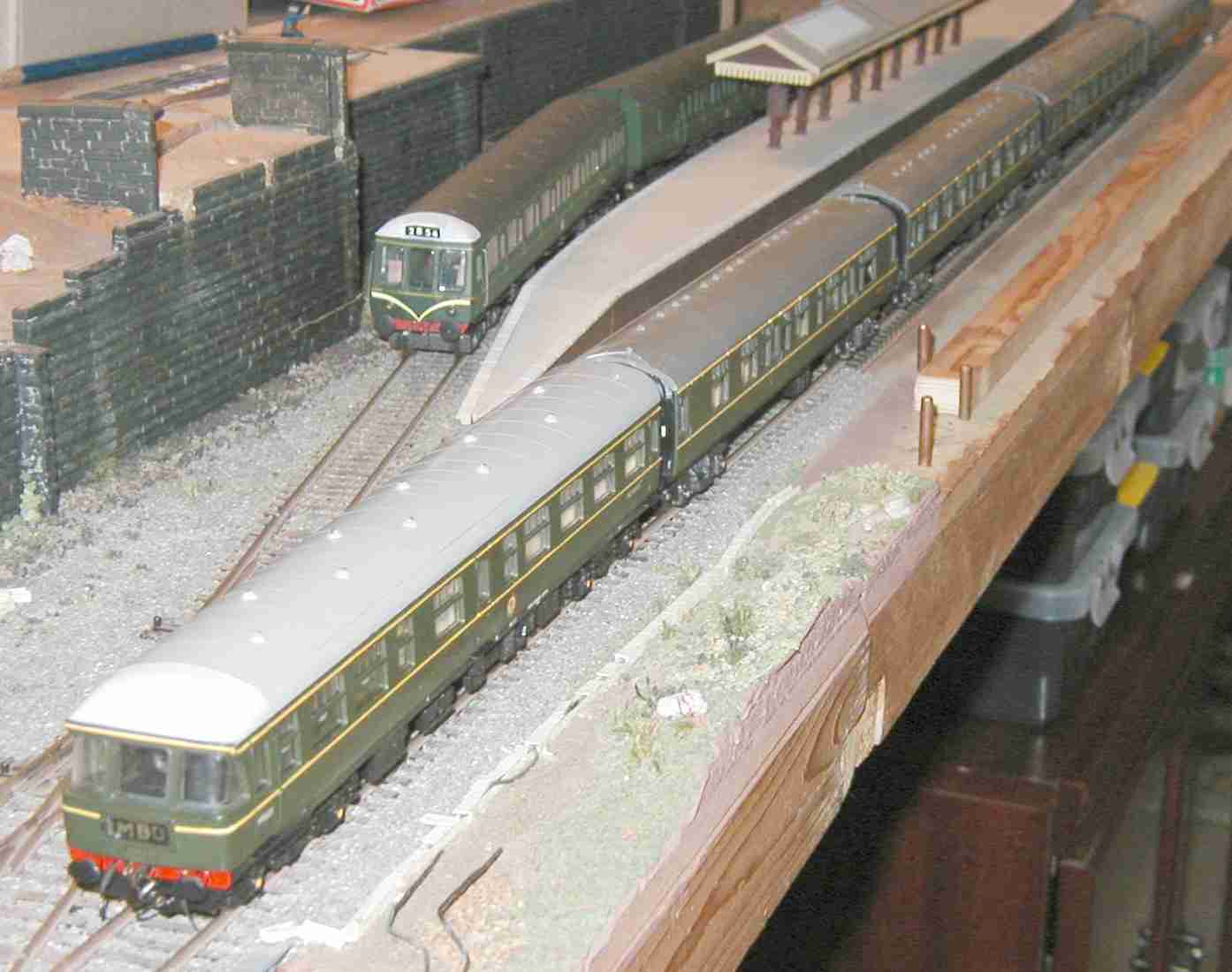
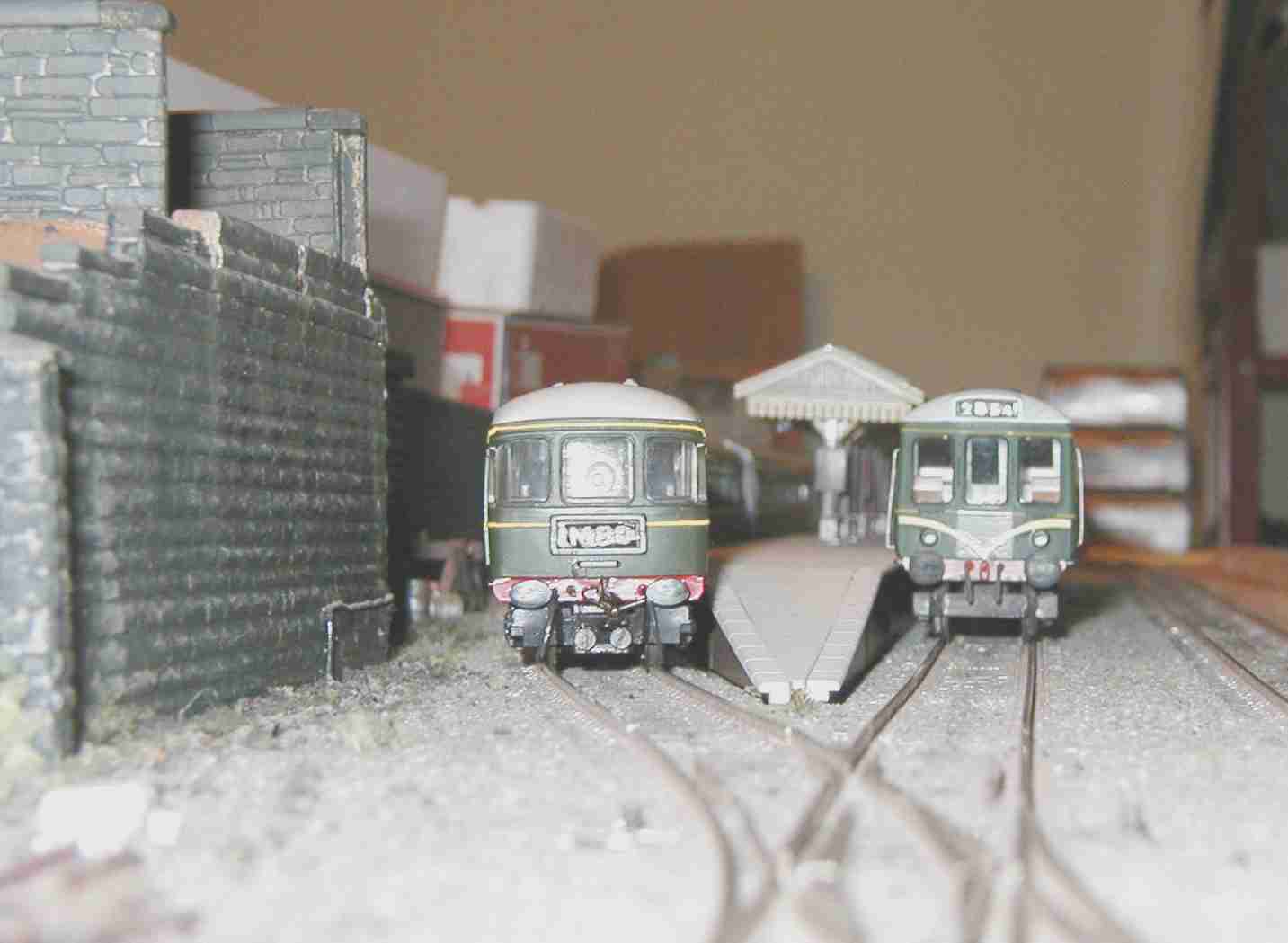
(Right) This shows a 110 DMU. These are
available as a Hornby 3-car set, but I managed to acquire an extra centre car
as well. This set has since been weathered.
(>>)

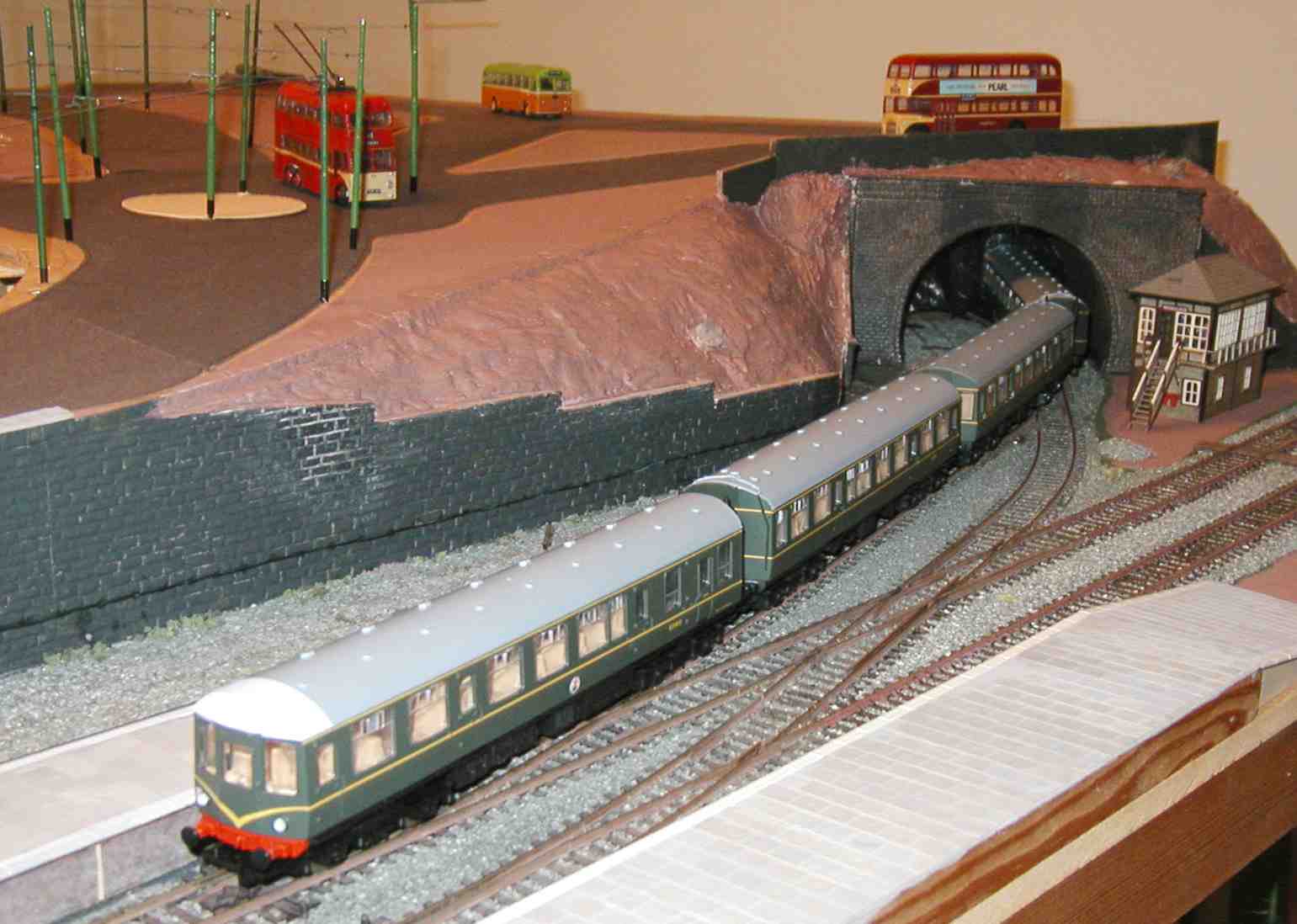
These Lima models can still be obtained in various liveries, but I only need the green 'whiskered' and yellow-panelled versions for my era.
I ought to prefer the whiskered version, but oddly enough I don't, perhaps because the yellow-panelled one had had some of the errors removed by Lima by the time they had released it. I have since acquired a centre car so can run a 3-car set (or even 4, by using two 2-car sets). Now generally weathered. (>>)
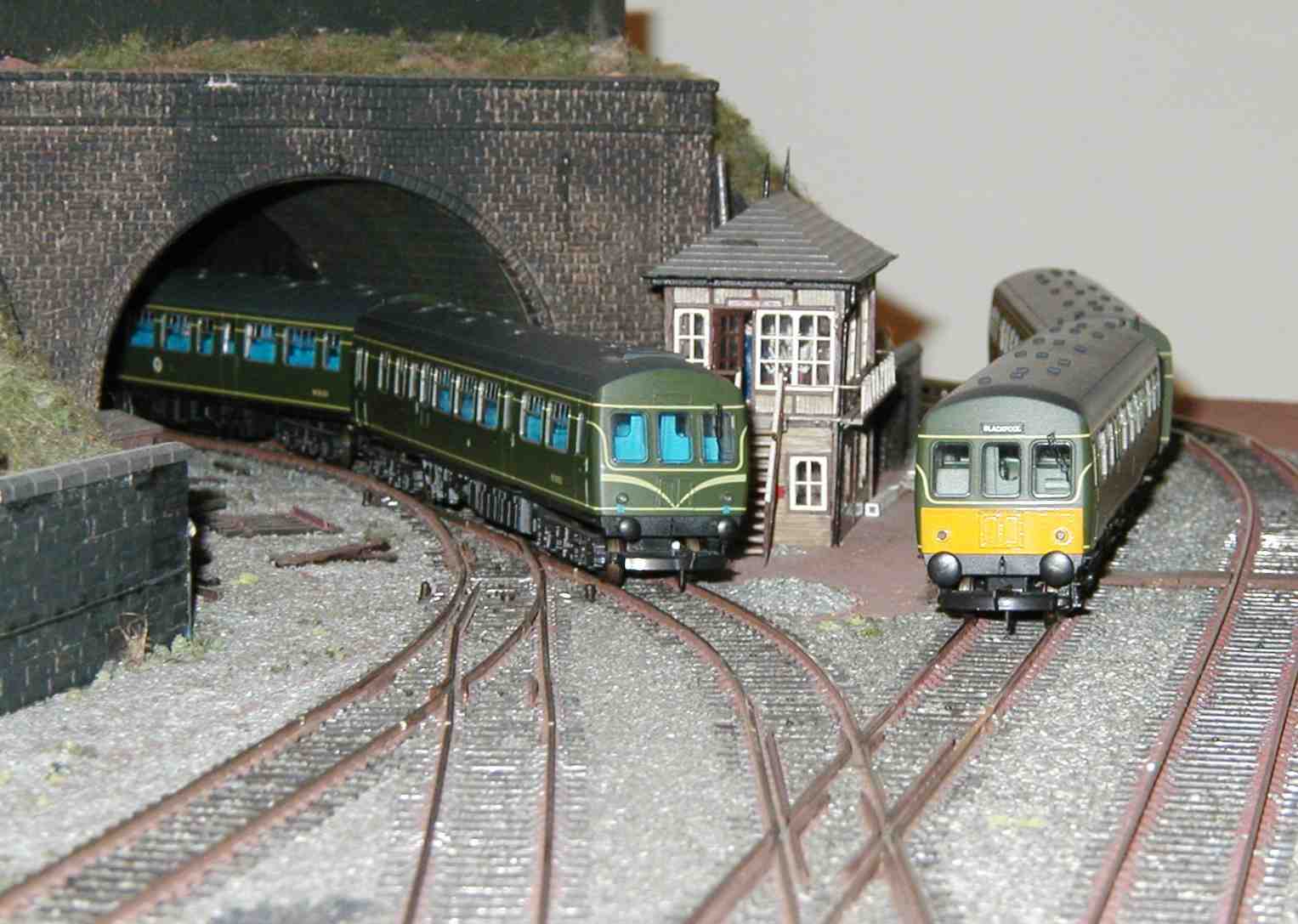
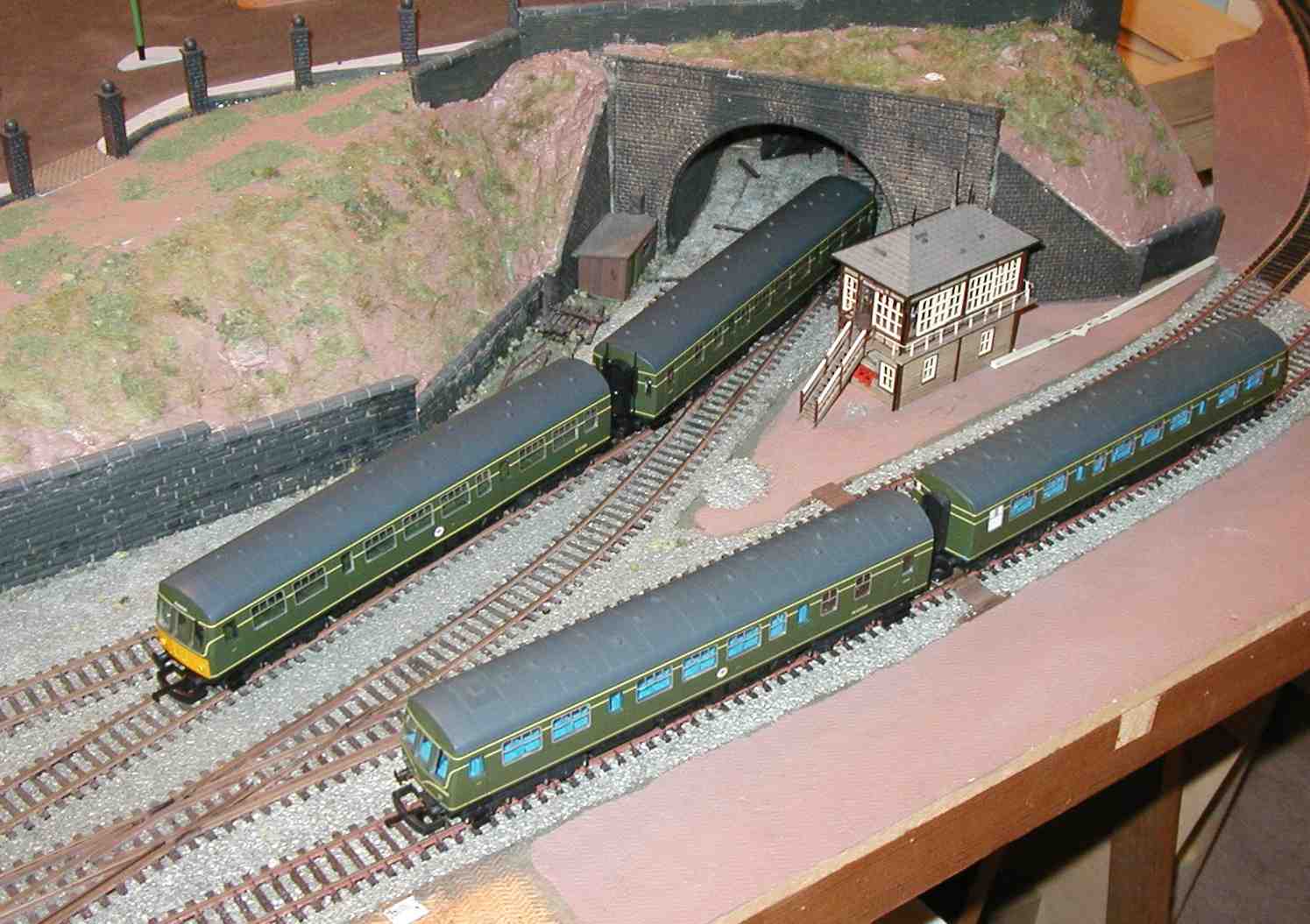
I probably have enough DMU's for the layout now, although a class 108 is under consideration......
(>>)
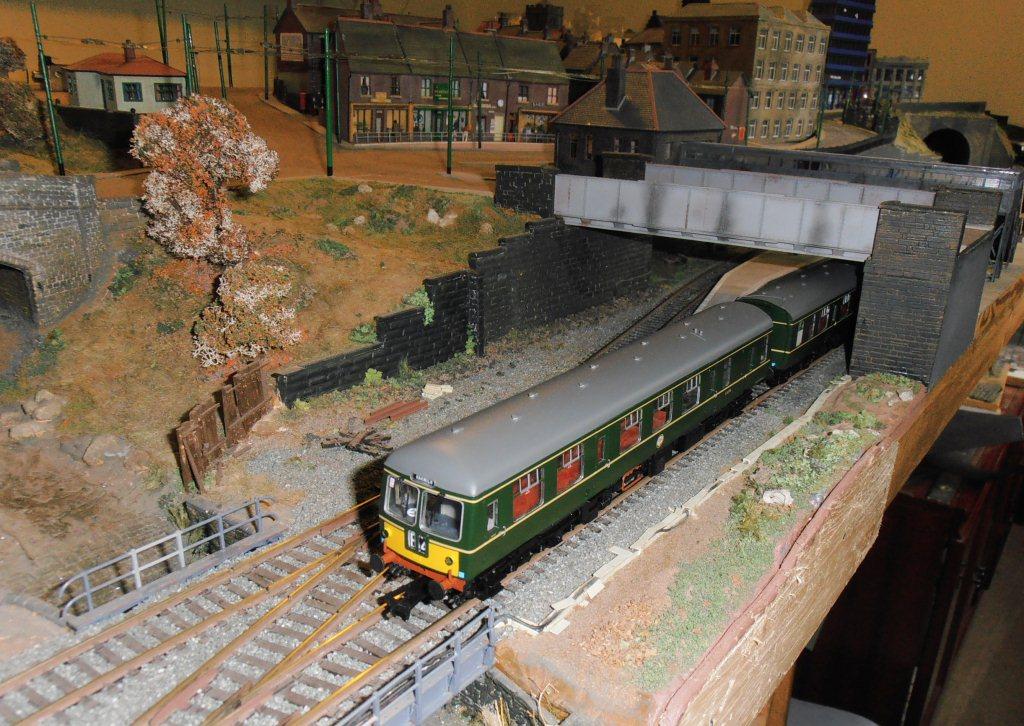
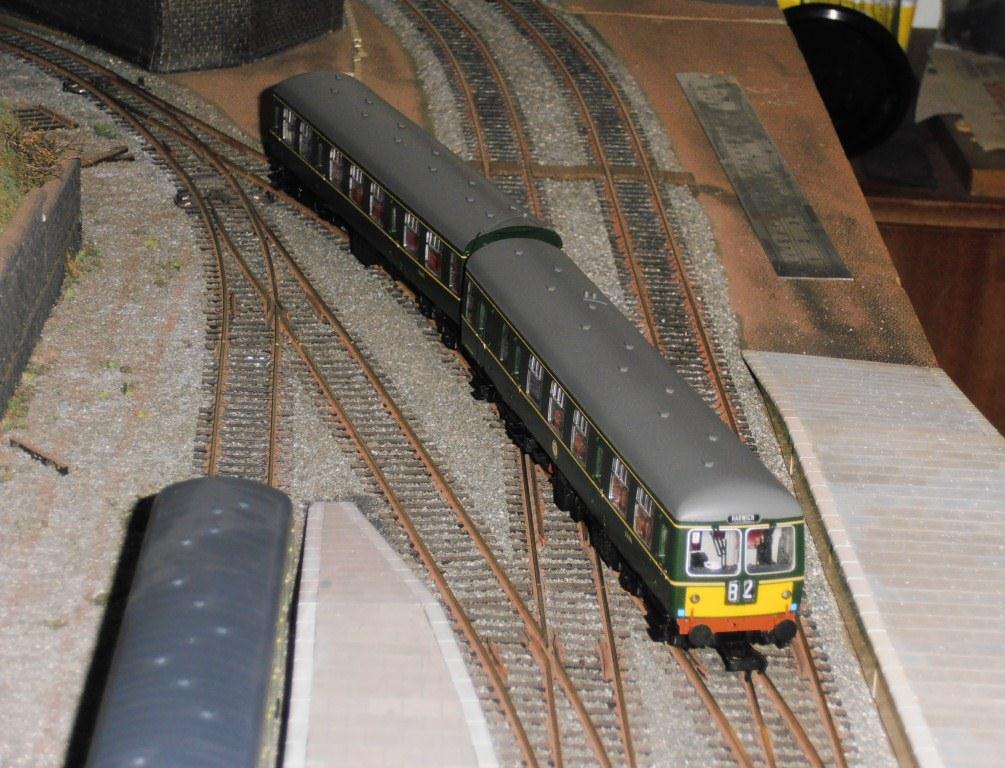
In the first photo it
is entering the station, and the other shows it passing the signal box with
the town above.
(>>)
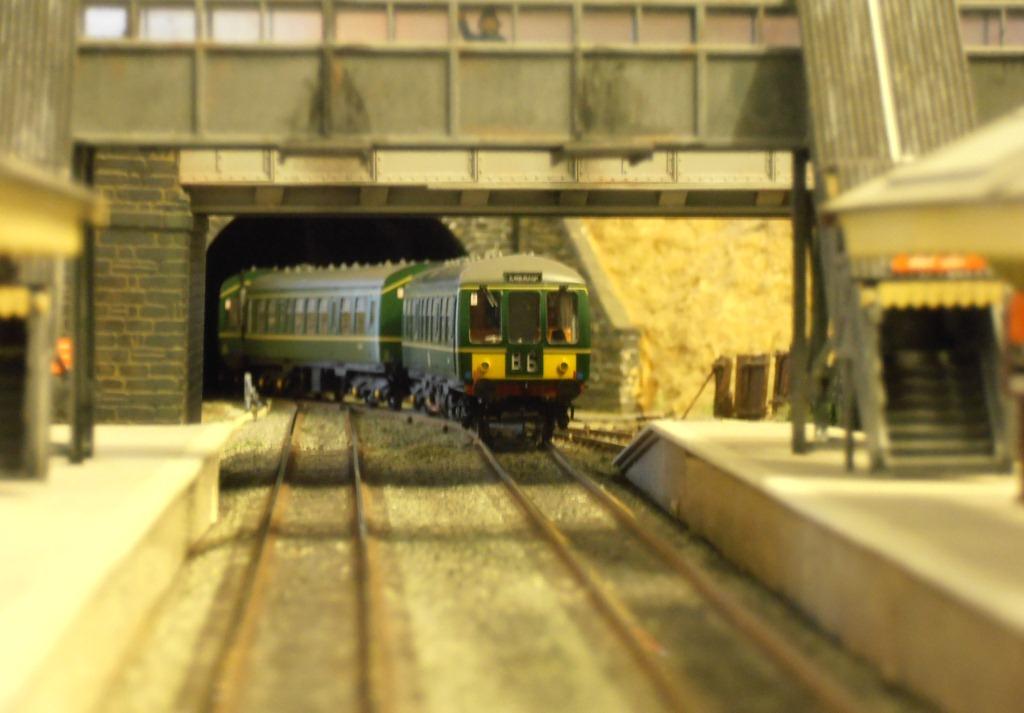
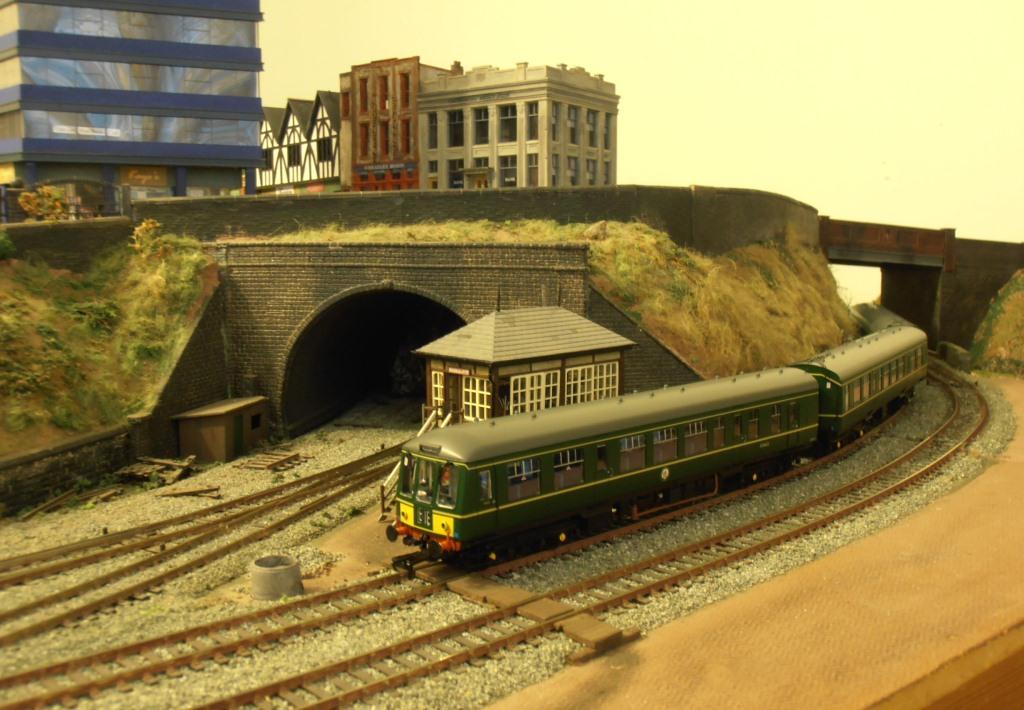
It also has headcode boxes, so it makes it look different.
All
the 105 and 108's have since been weathered.
(>>)
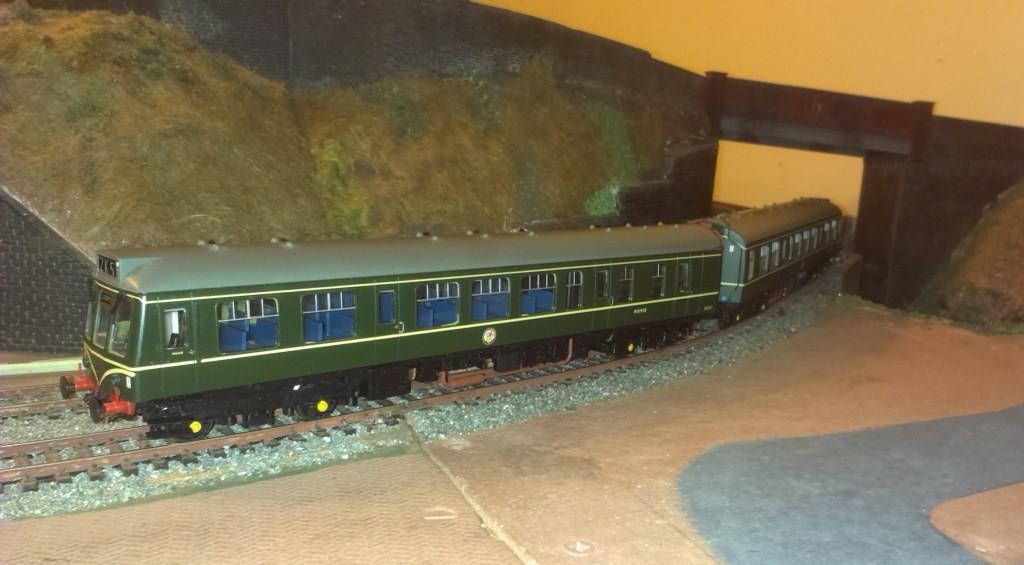
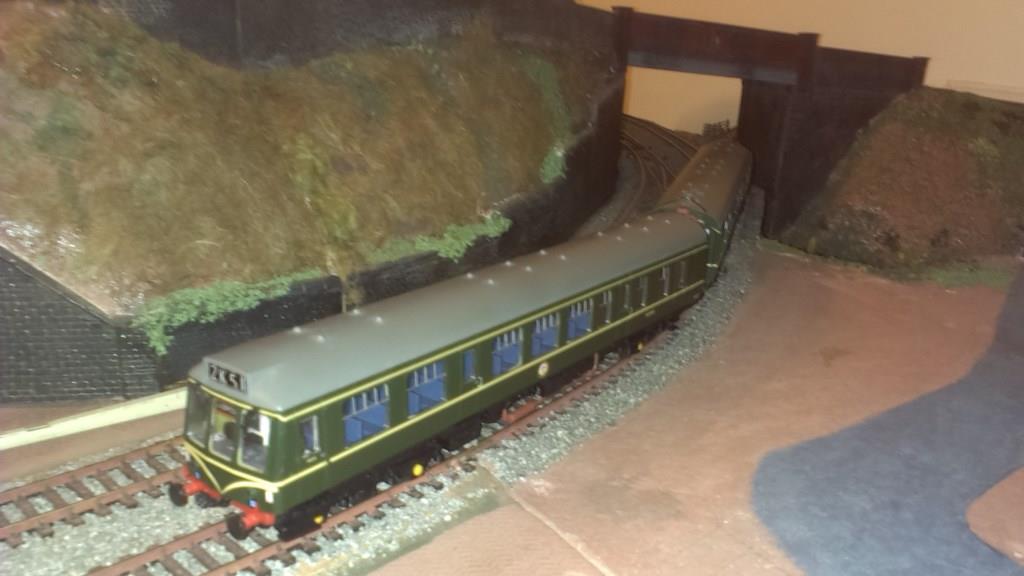
These work by detecting movement and produce steam engine or diesel sounds. I am awaiting the introduction of DMU modules to use on the fleet as well.
The best way to implement them is to add them to rolling stock, otherwise every locomotive would have to be modified. Shown here are a coal wagon for the coal train - steam sounds, and a boiler load which can have any freight behind it - diesel sounds. Left - being assembled, right - hidden away ready to go. (>>)
